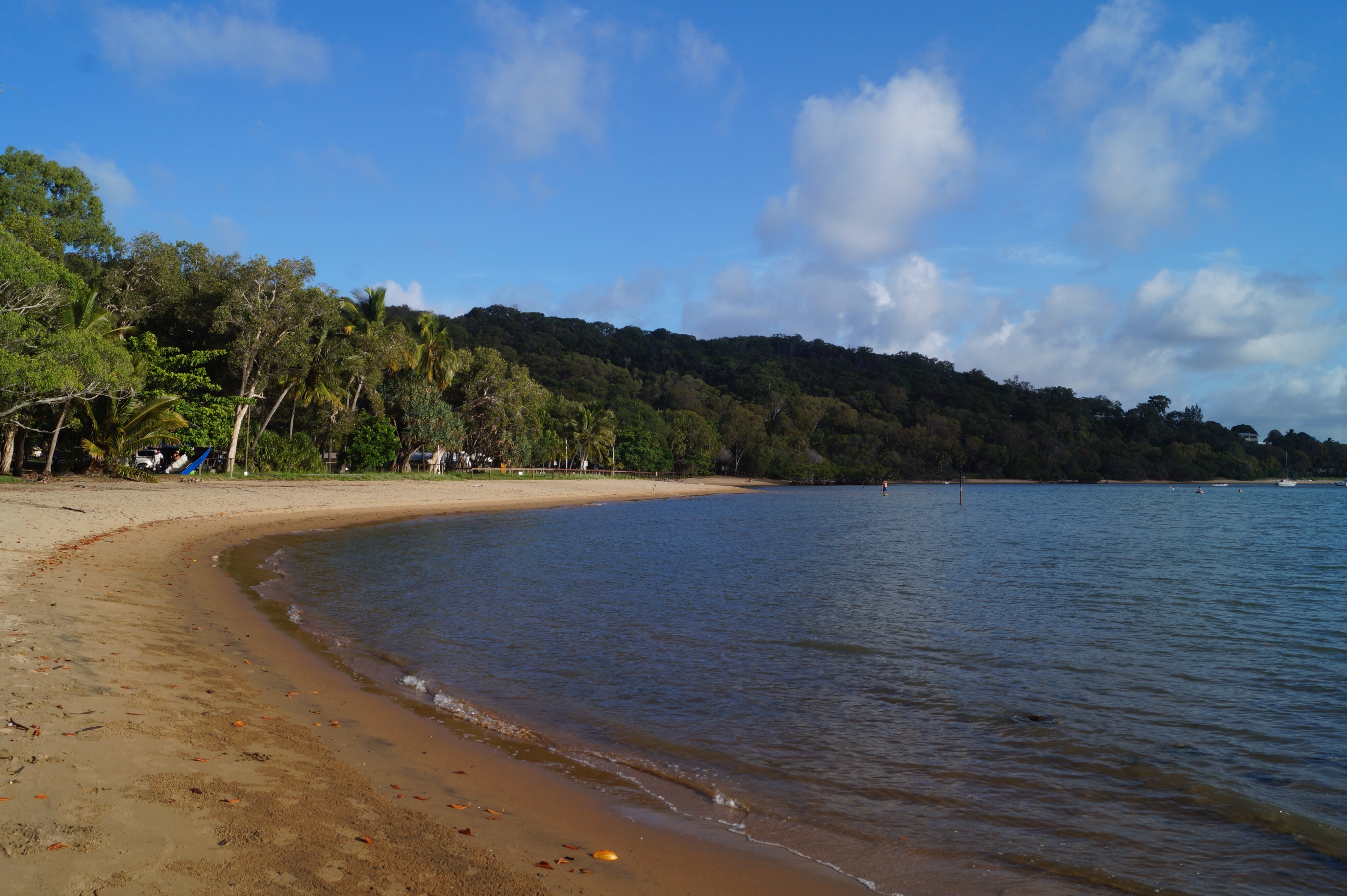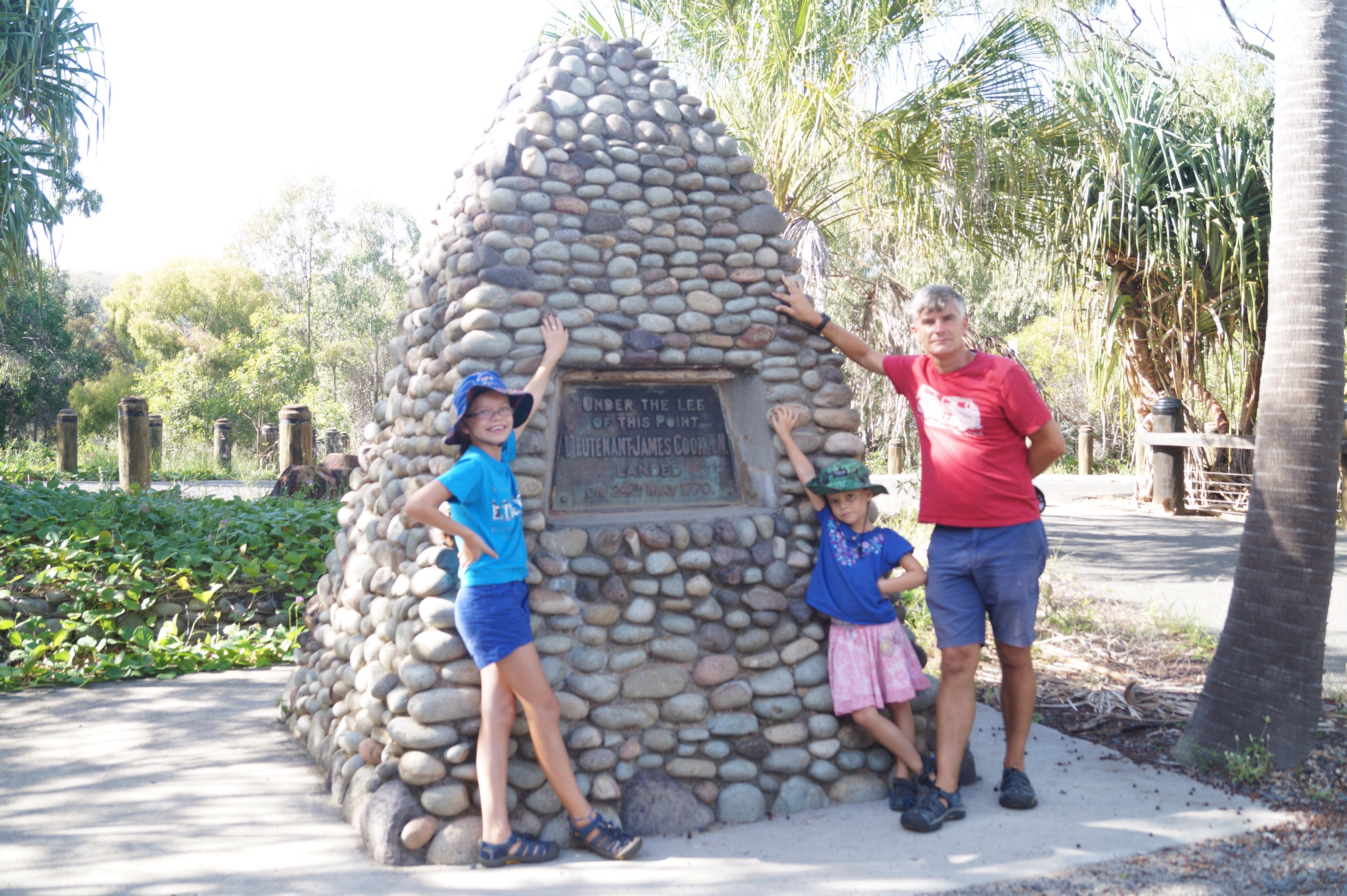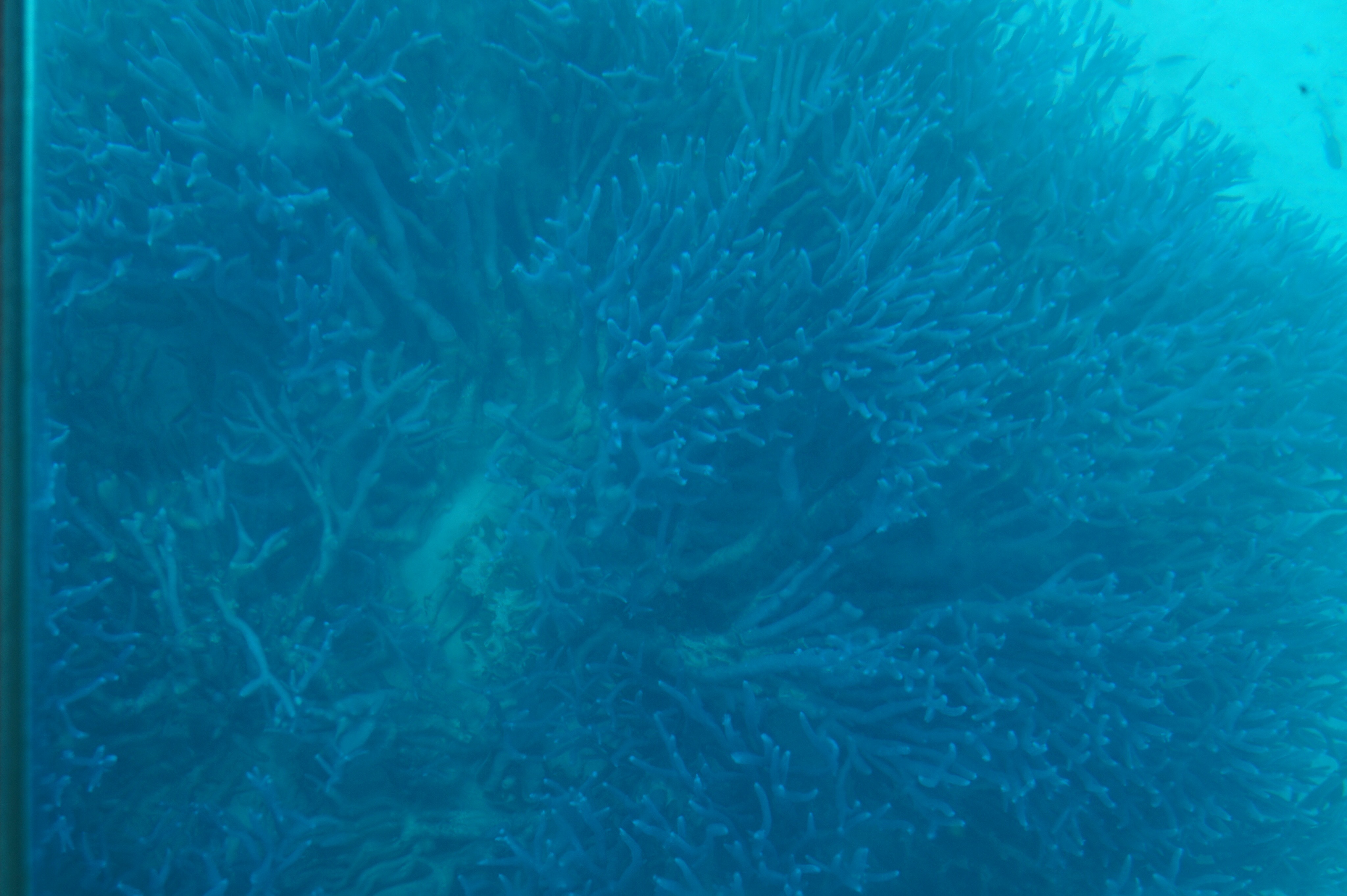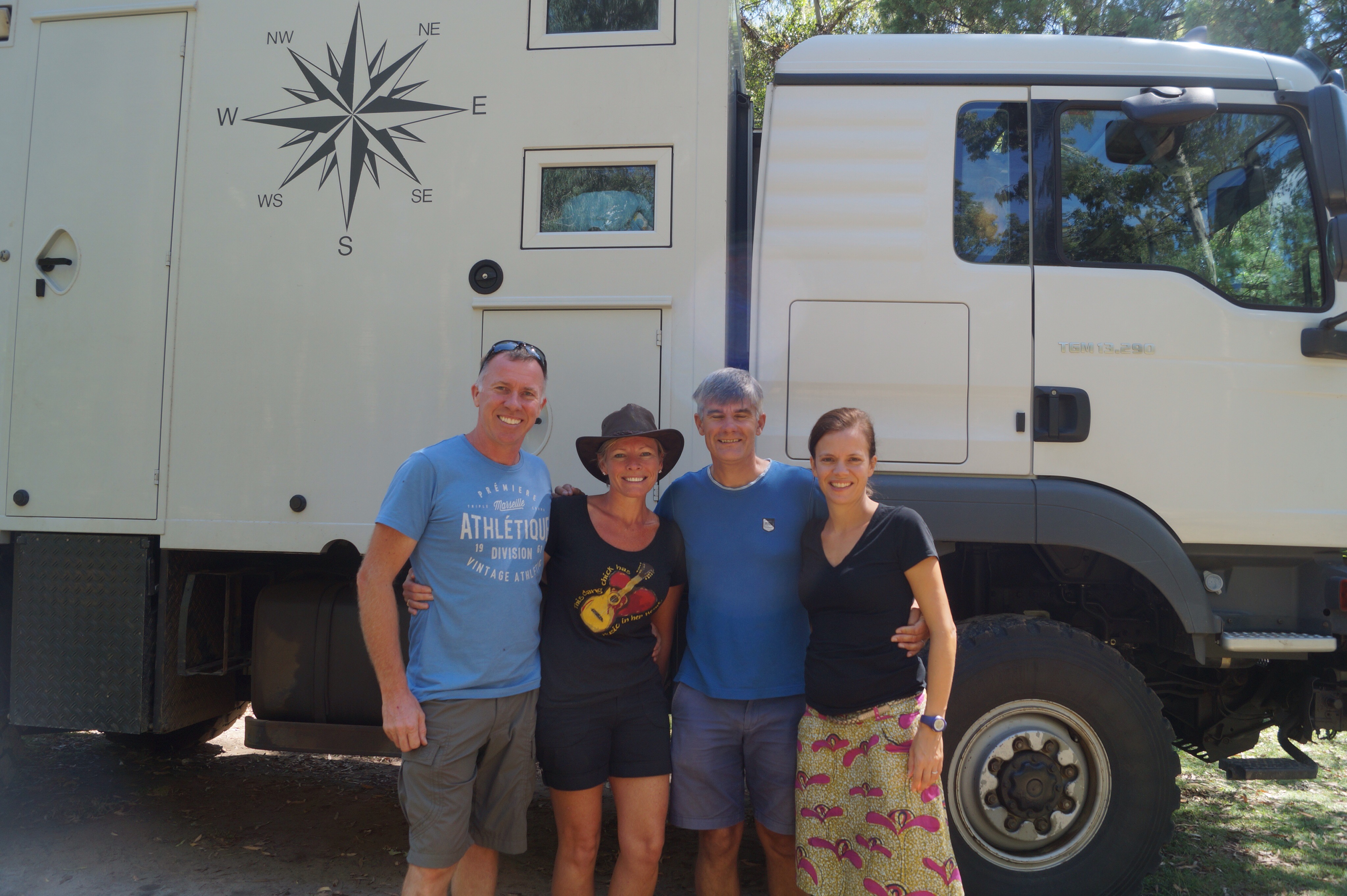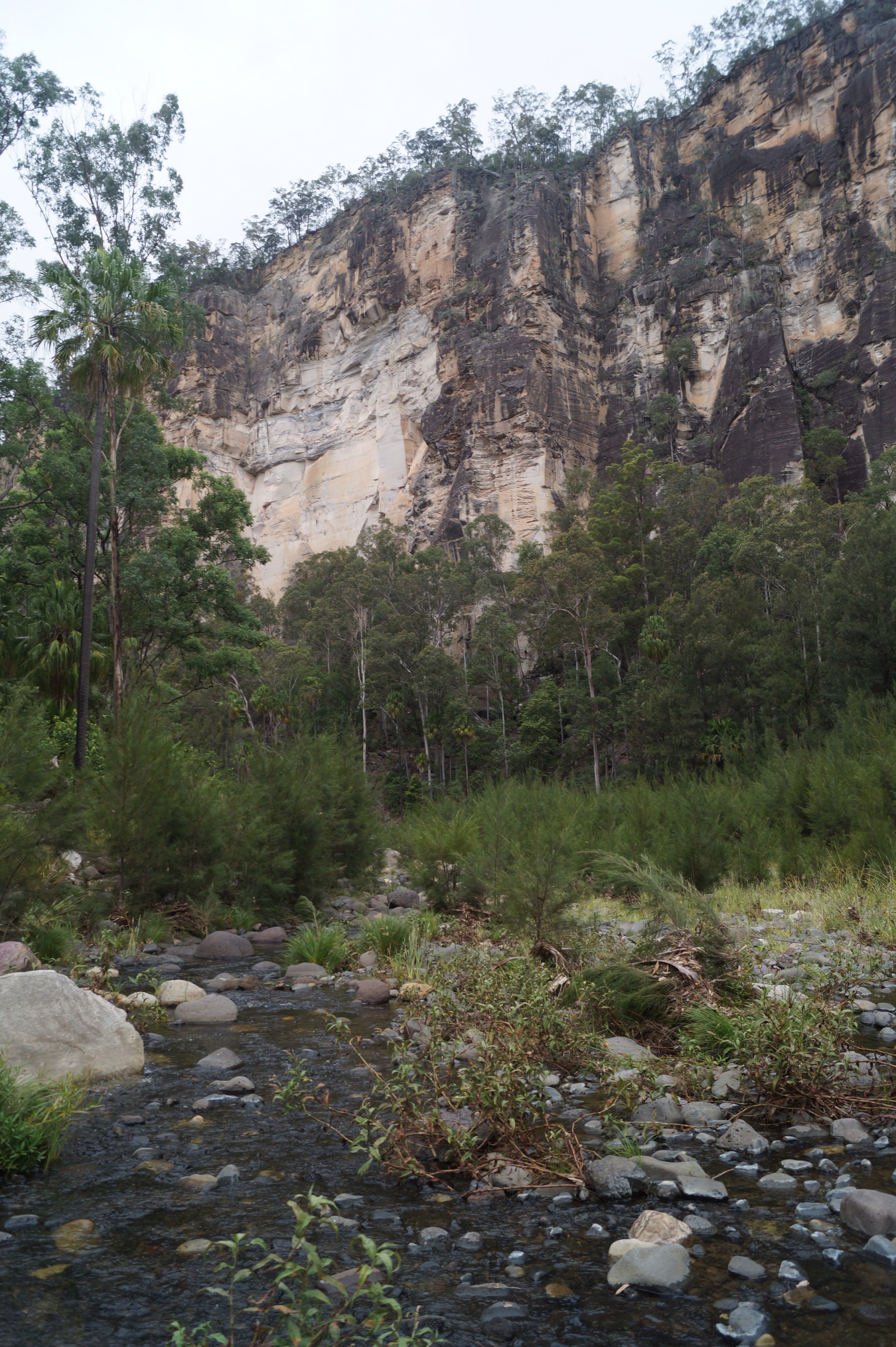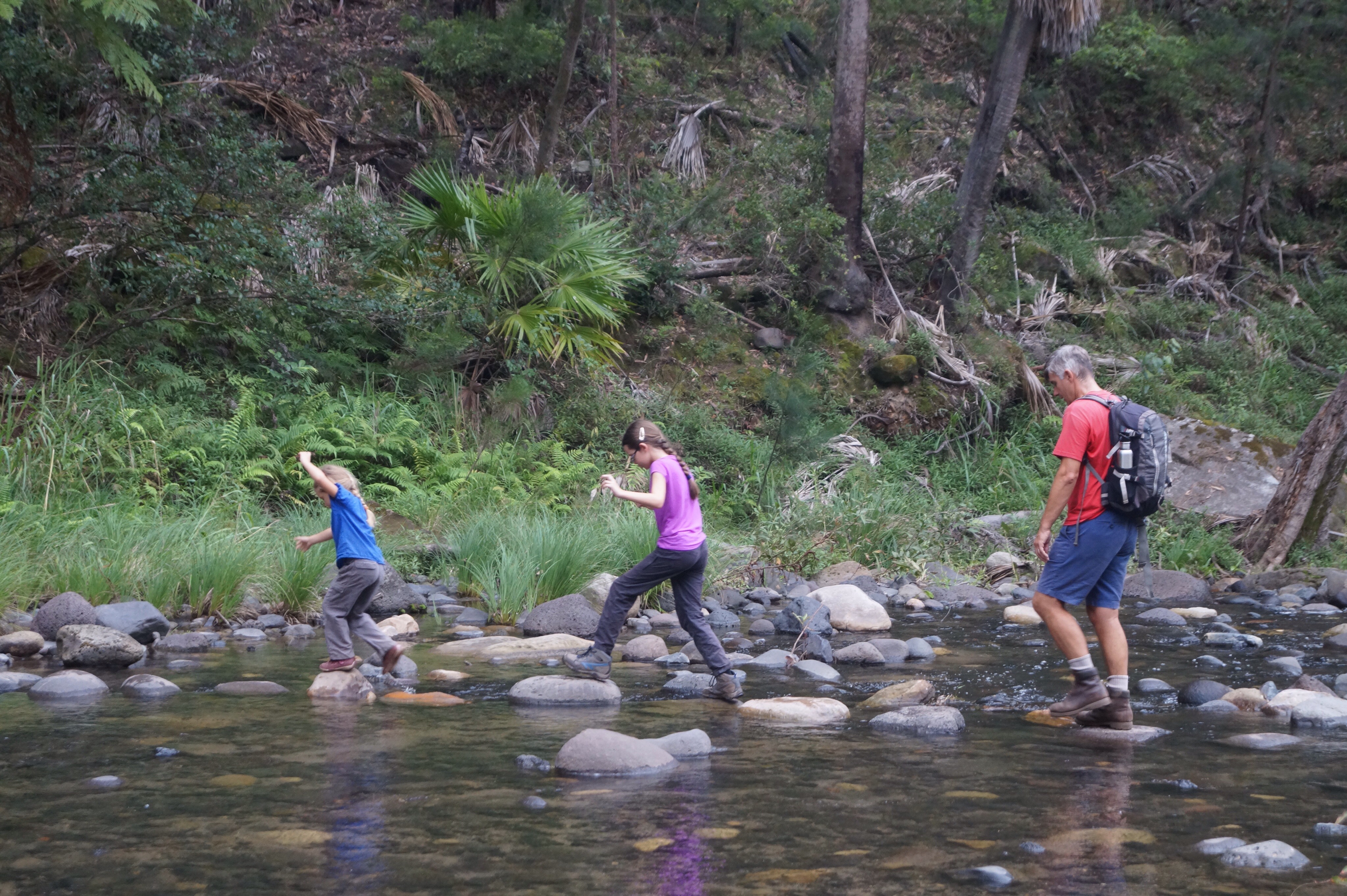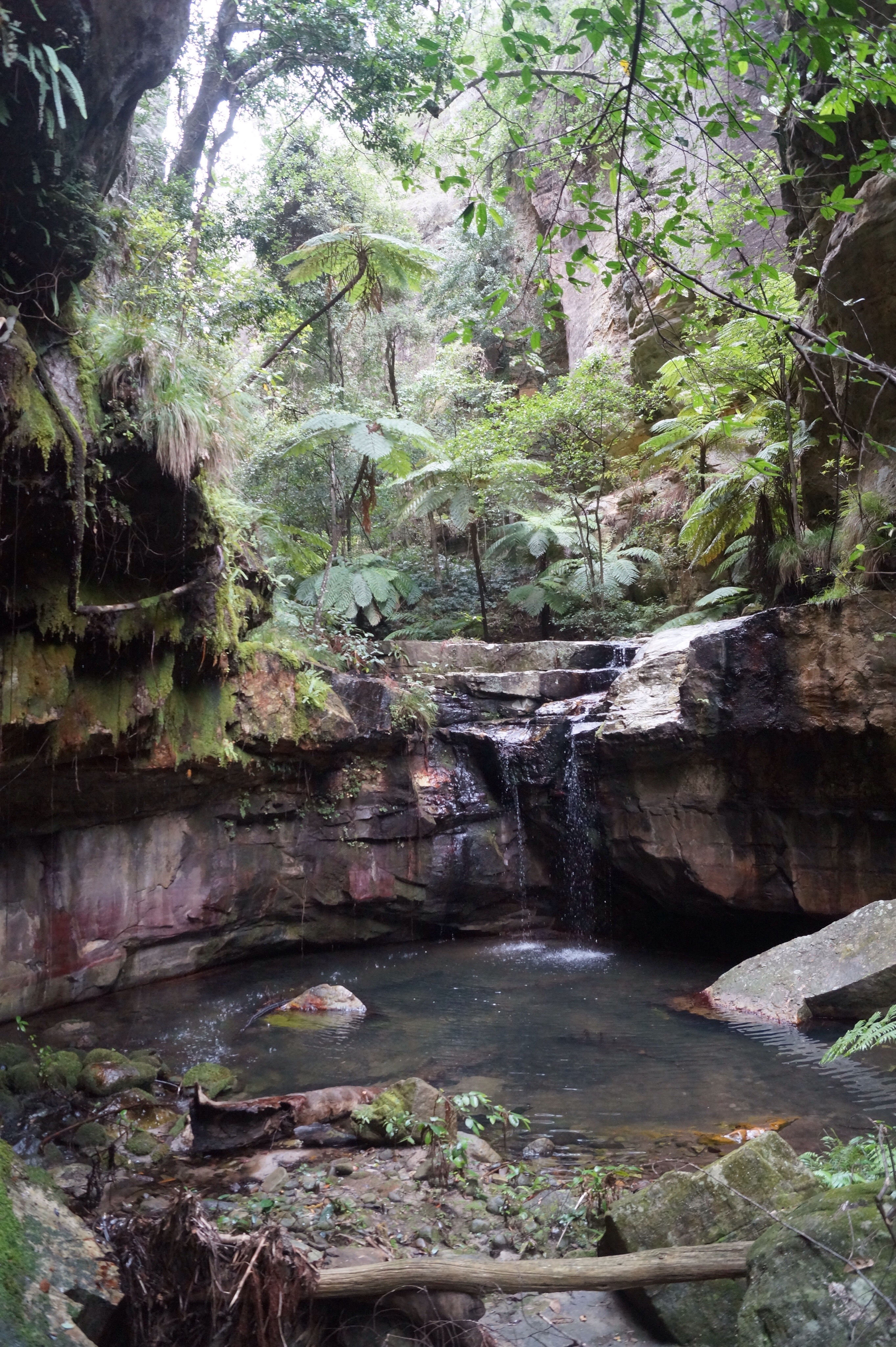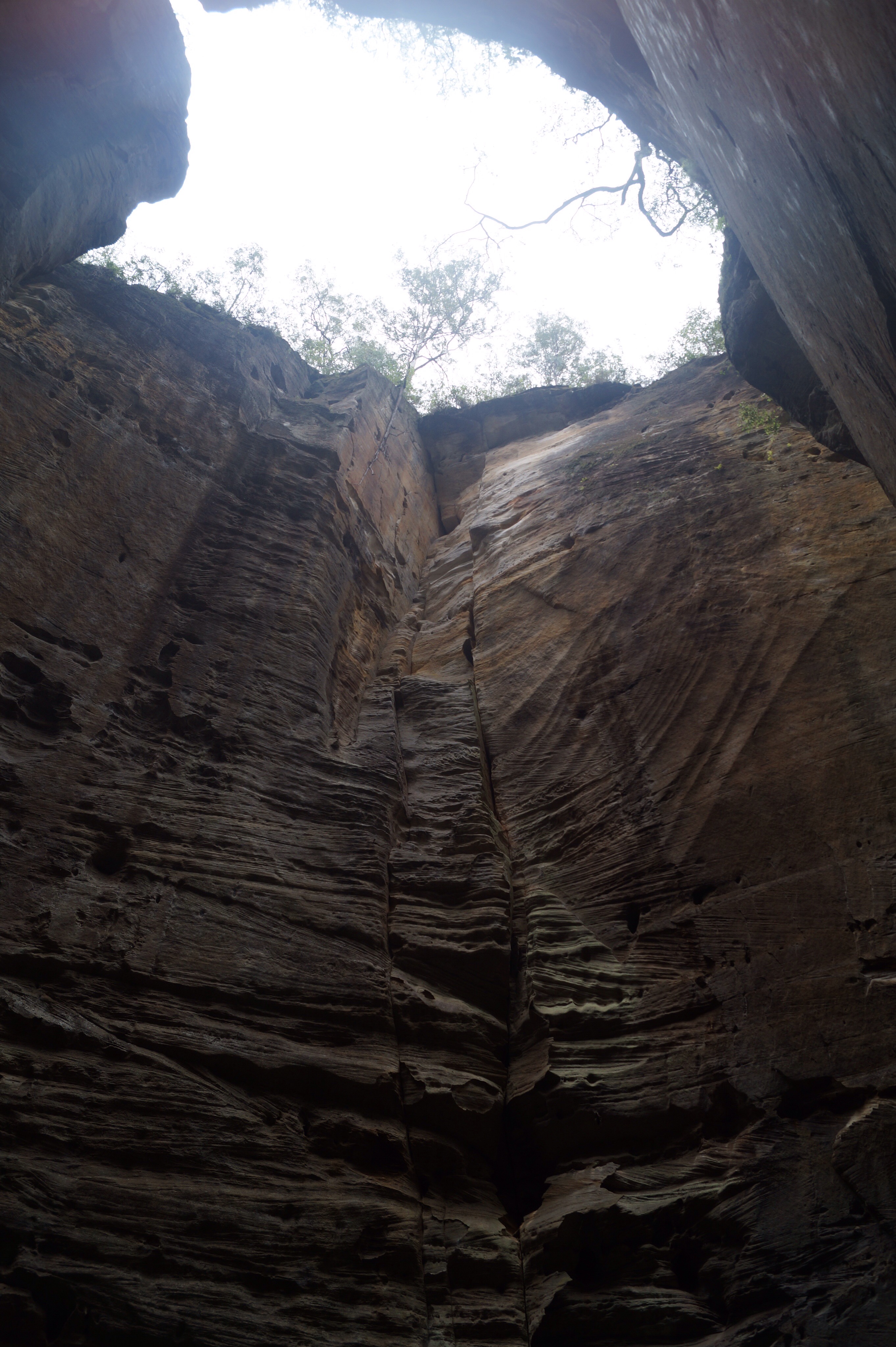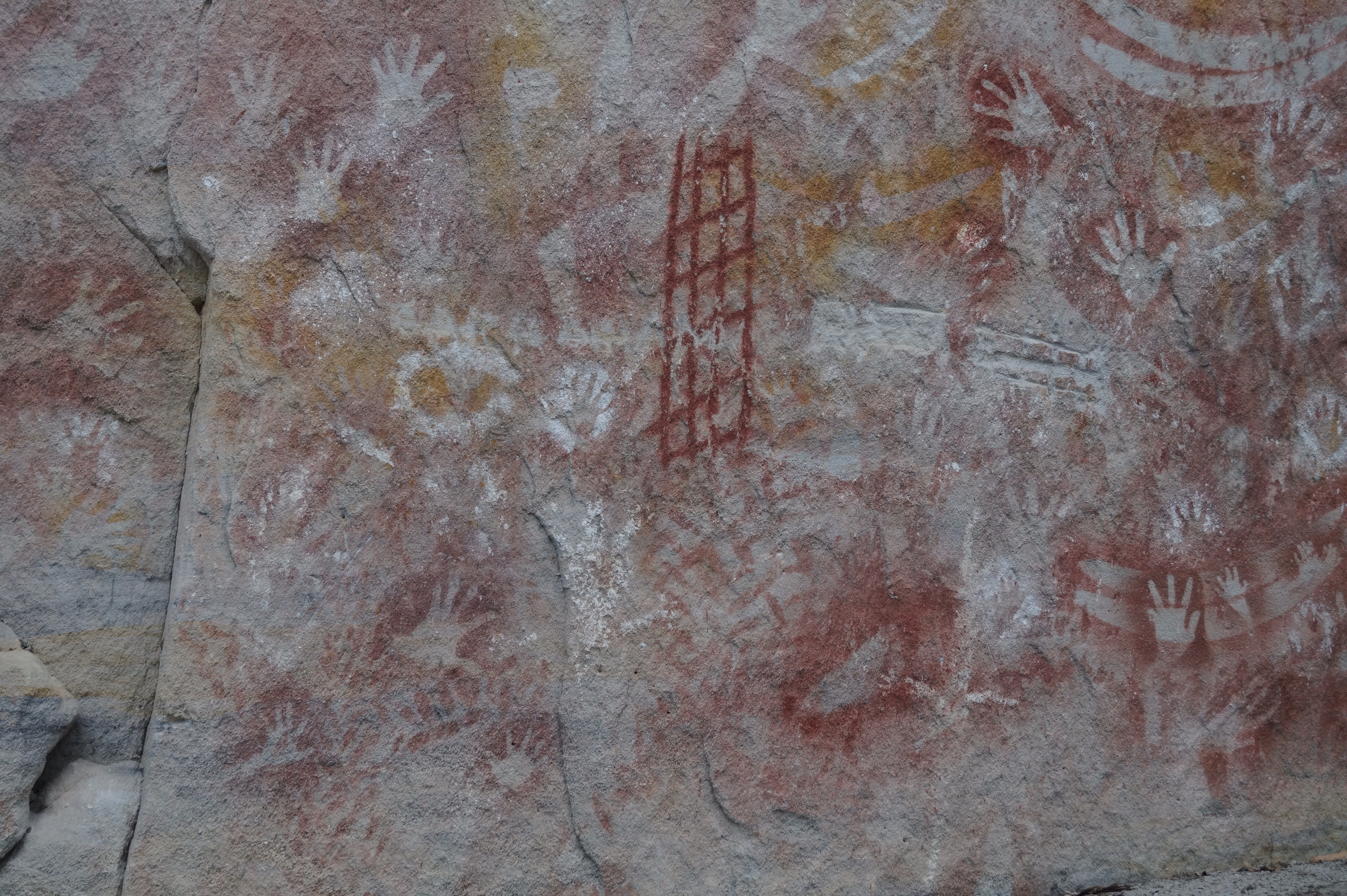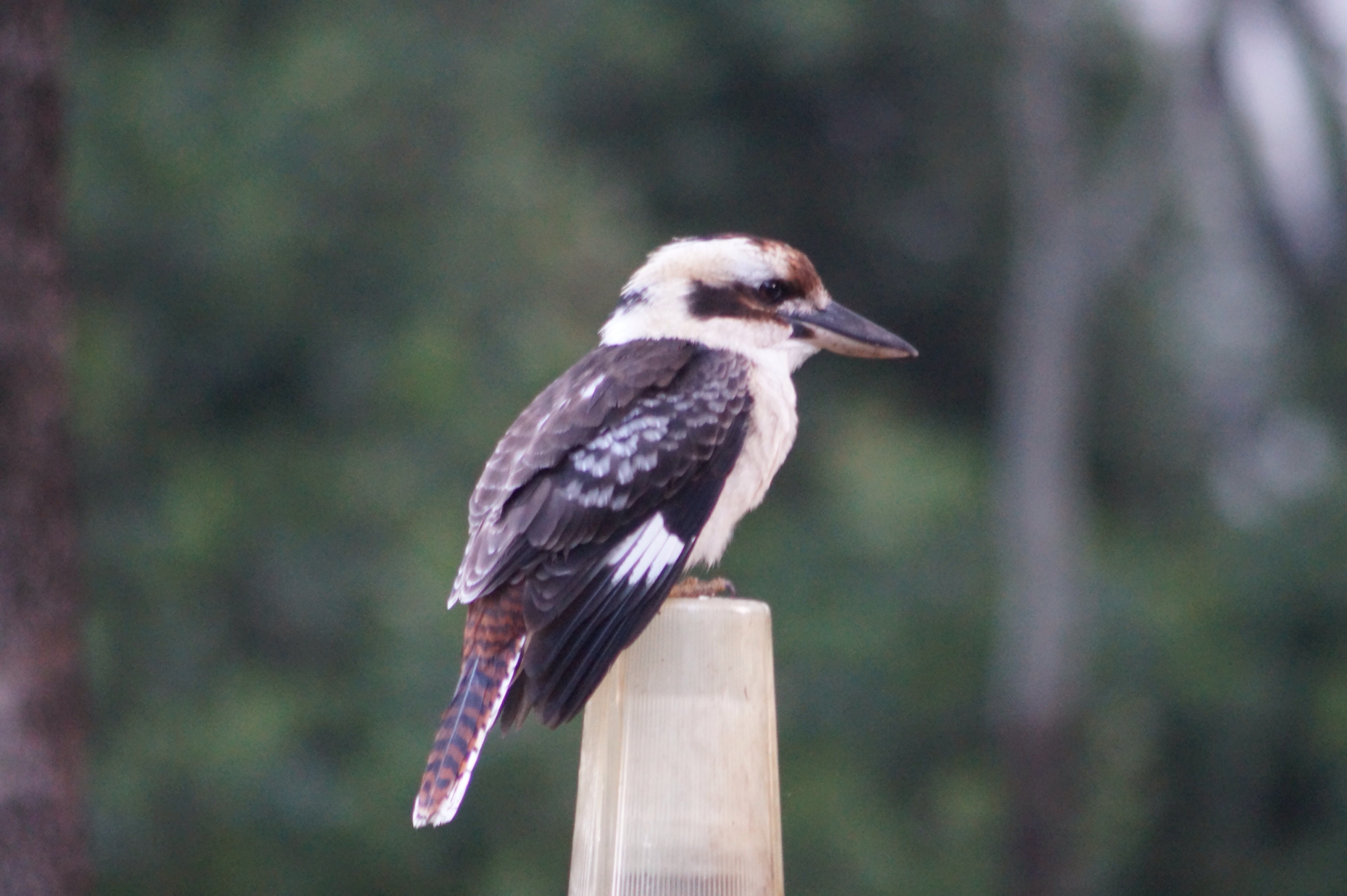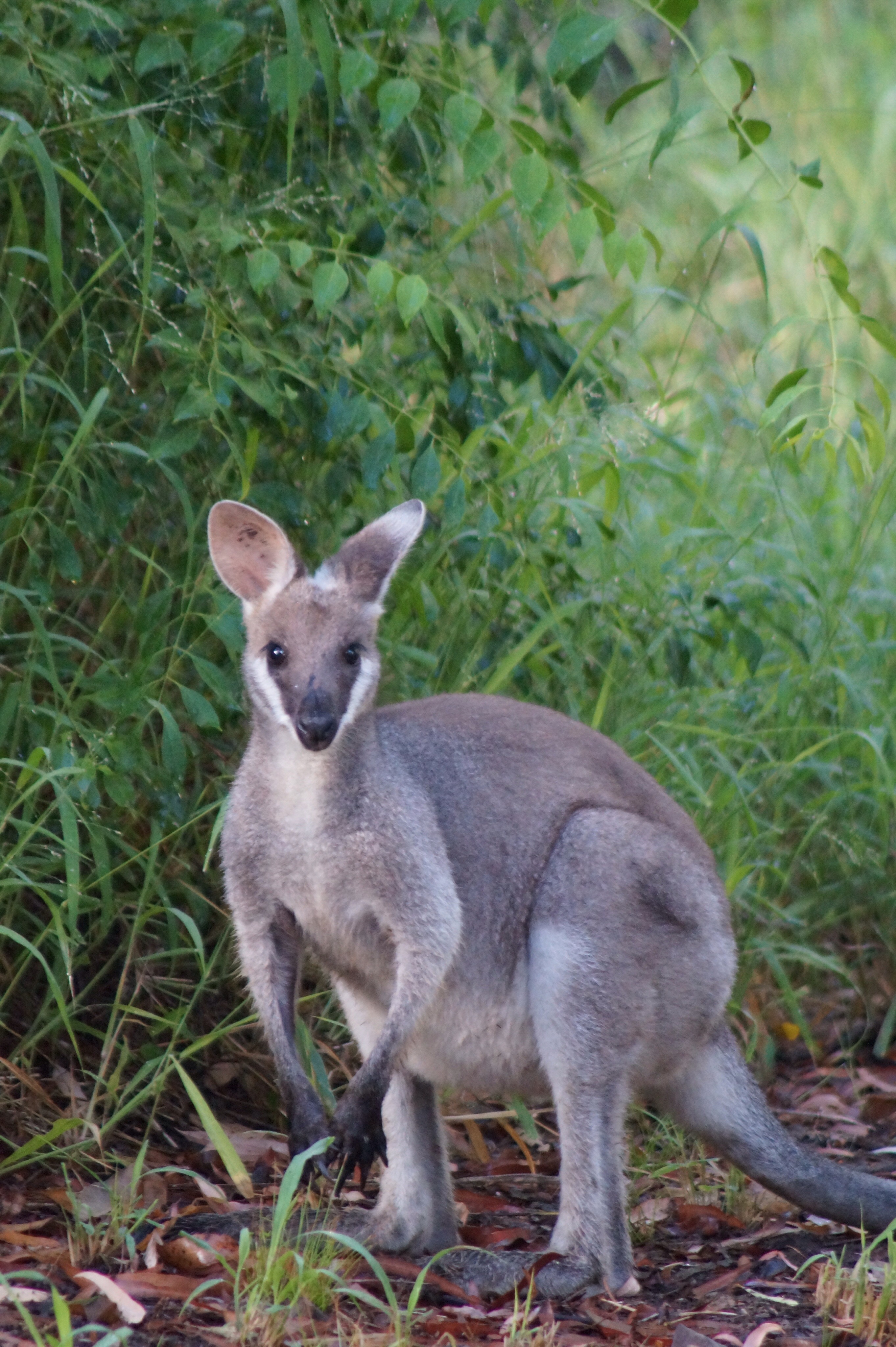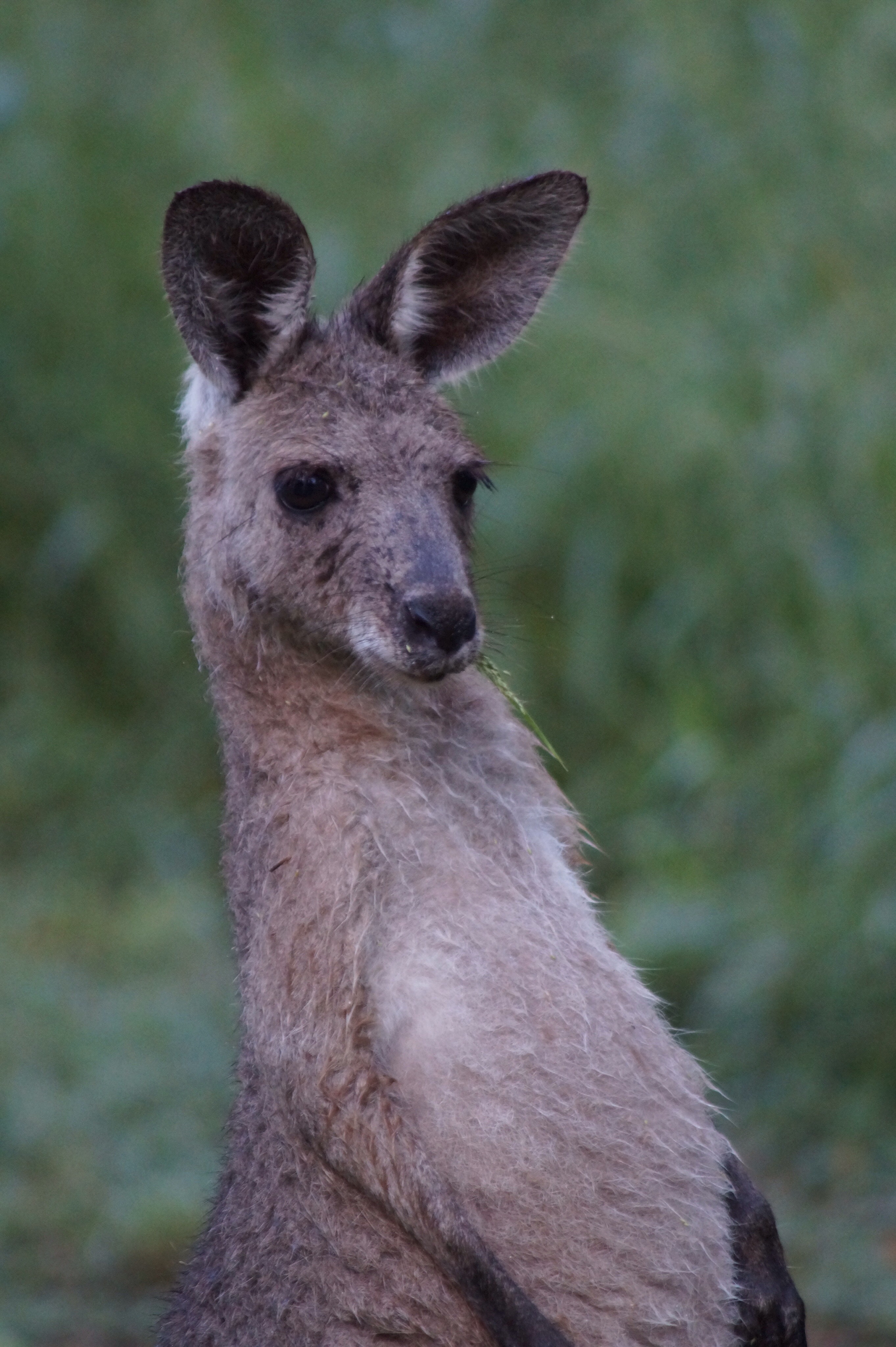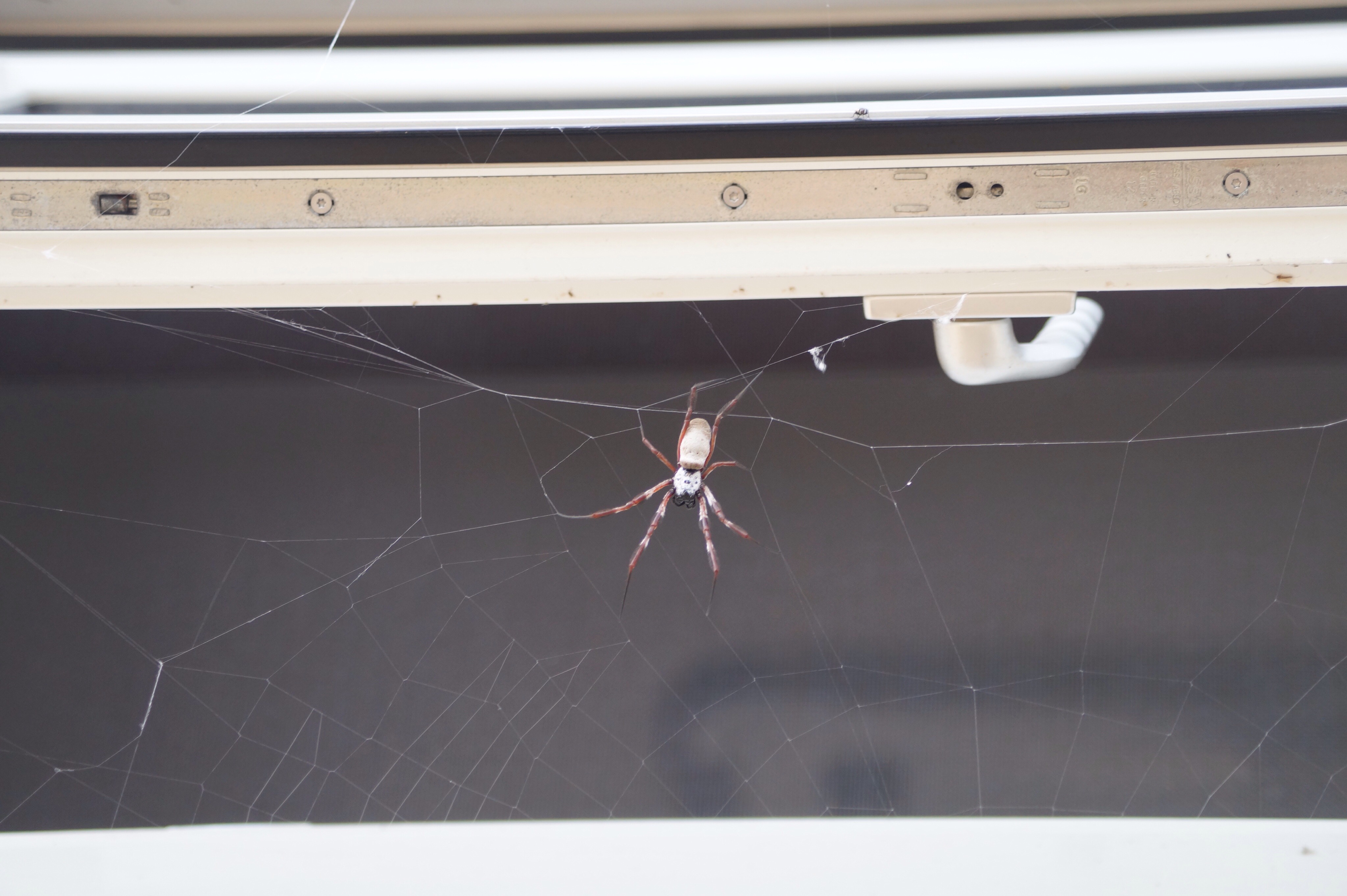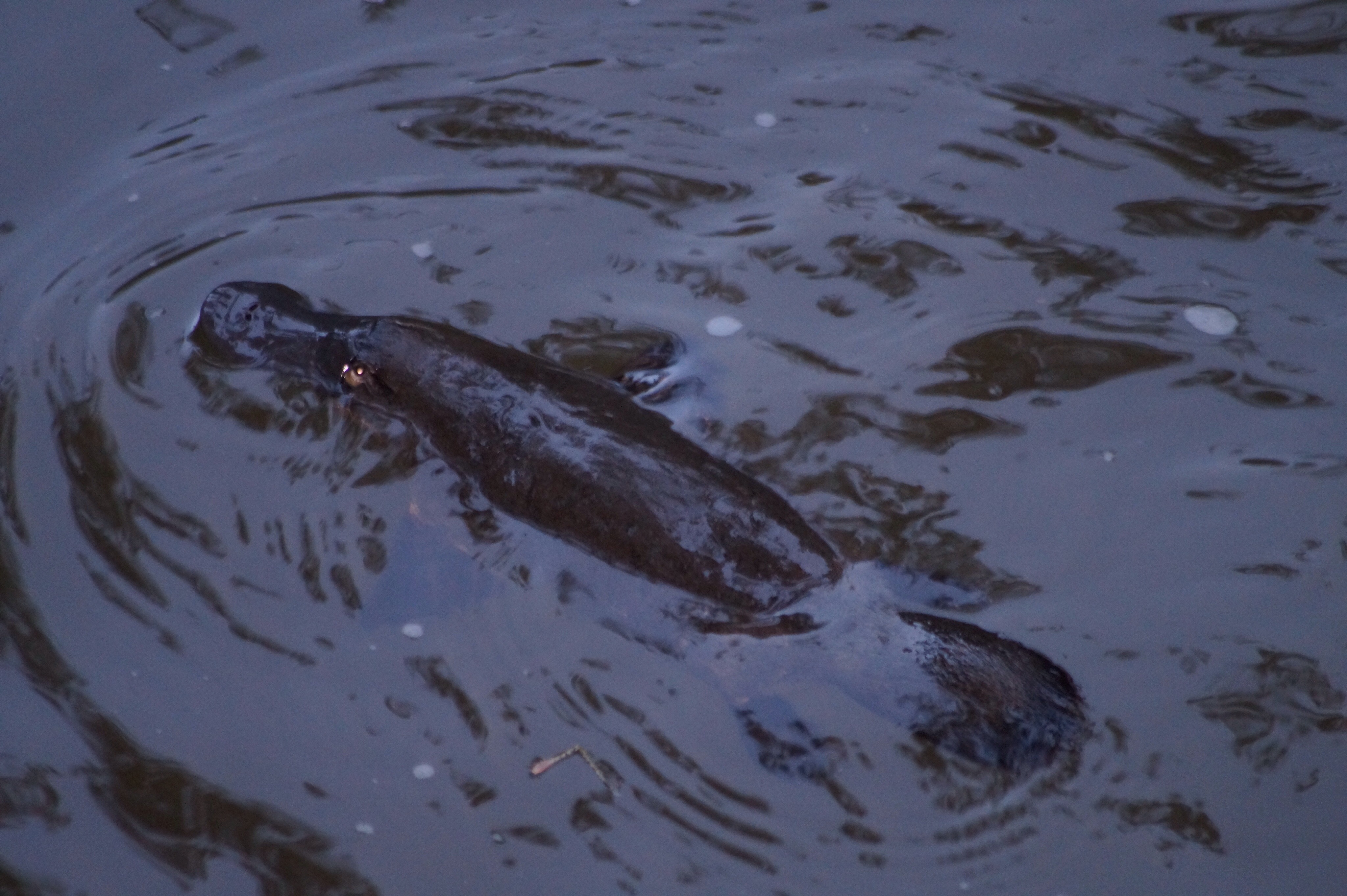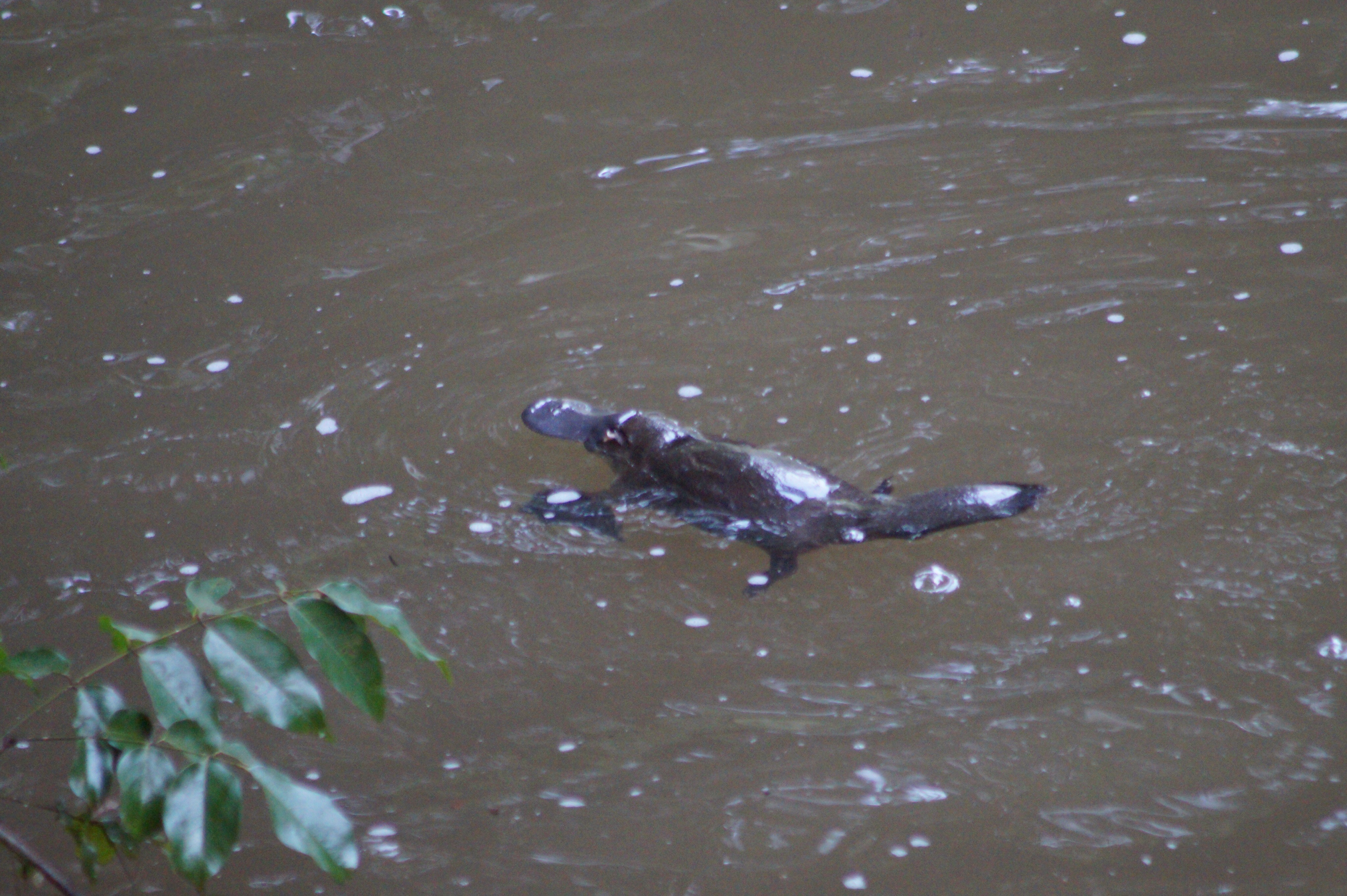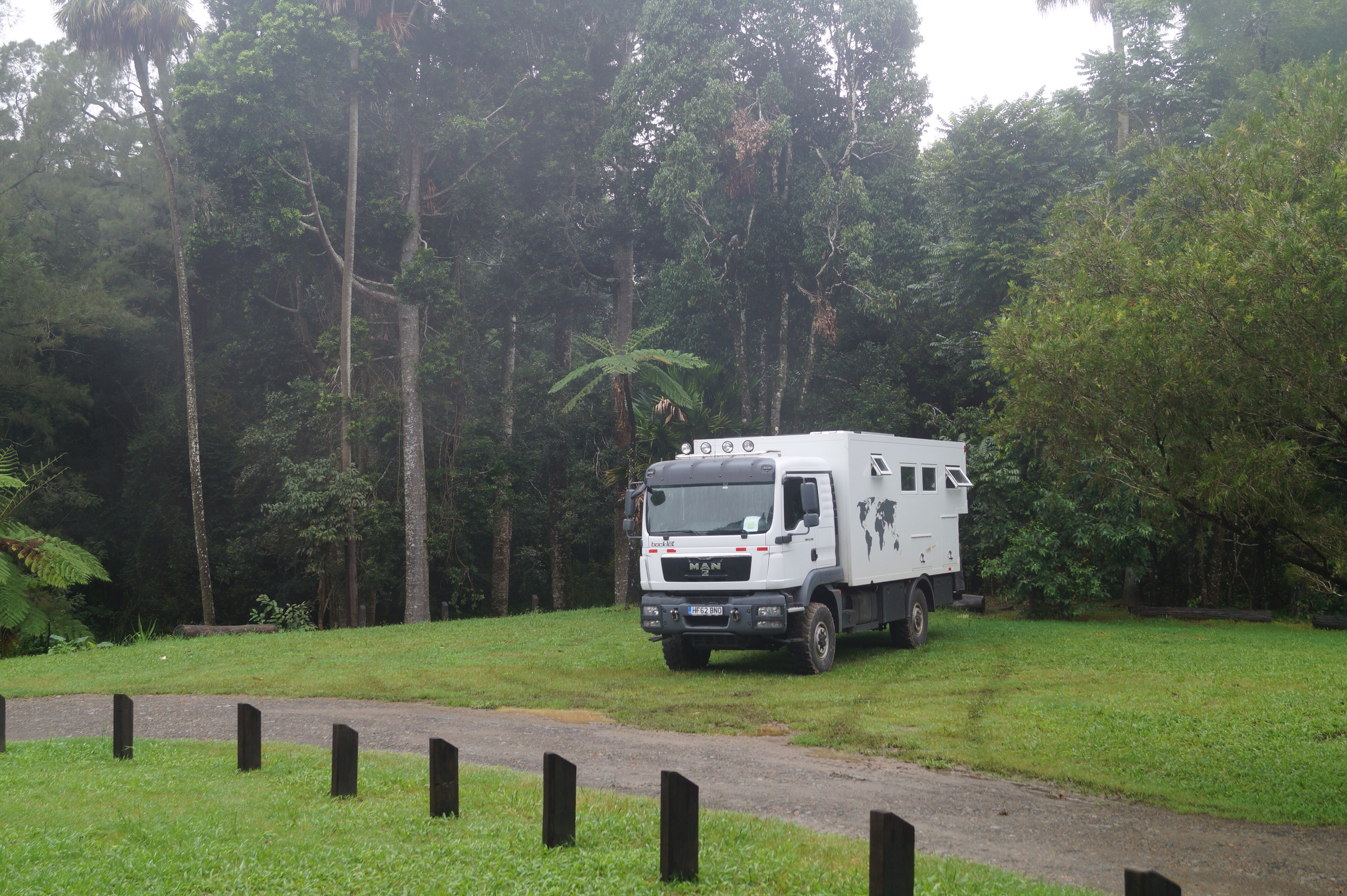I could hear something grabbing a gasp of breath before a gentle splash then silence; looking out into the dark I could see nothing. Switching on the ship's lights, it was just the inky black waters....then two flashes of silver as a mother and baby dolphin surfaced for air. Darting back down just under the surface we could see them speedily streaking left and right hunting small fish and squid. As the light attracted more prey they stayed for 20 minutes, swooping this way and that like underwater fireworks, just below the surface. As they filled their stomachs, we all watched mesmerised with exclamations of delight whenever they grabbed another breath from the surface.
We were on a three night sailing trip around the Whitsunday Islands on a tall ship that we had caught from the sailing town of Airlie Beach. The Islands are a few kilometres offshore of the coast and are surrounded by the Great Barrier Reef.
Airlie Beach was a short drive from Mackay where we had met up with the lovely Australian family we met just over a year ago on another sailing trip, to Antarctica. Brianna, William and the girls had got on famously on the Russian Scientific Vessel we had travelled down to the ice on. Now in tropical Queensland they picked up their friendship where they had left off, with lots of swimming, playing and some very muddy fishing. Steve and I really enjoyed catching up with their parents Kim and Andrew. Although they had lots of exciting possibilities for the weekend, we were all up for good company and relaxation with lots of chatting, eating, hanging out and on Sunday morning they took us to watch the great Aussie tradition of "Lifesavers". Both of their kids are in the junior version: "Nippers". We watched Brianna swim out into the deep water, race using her paddle board out and train how to save lives. Lucy joined in the running races with Brianna's group. While Alisha helped out on the Sausage Sizzle - they'll be applying for their Aussie passports next! We all had a wonderful weekend, it was lovely to see them again and see a slice of their Australian life.
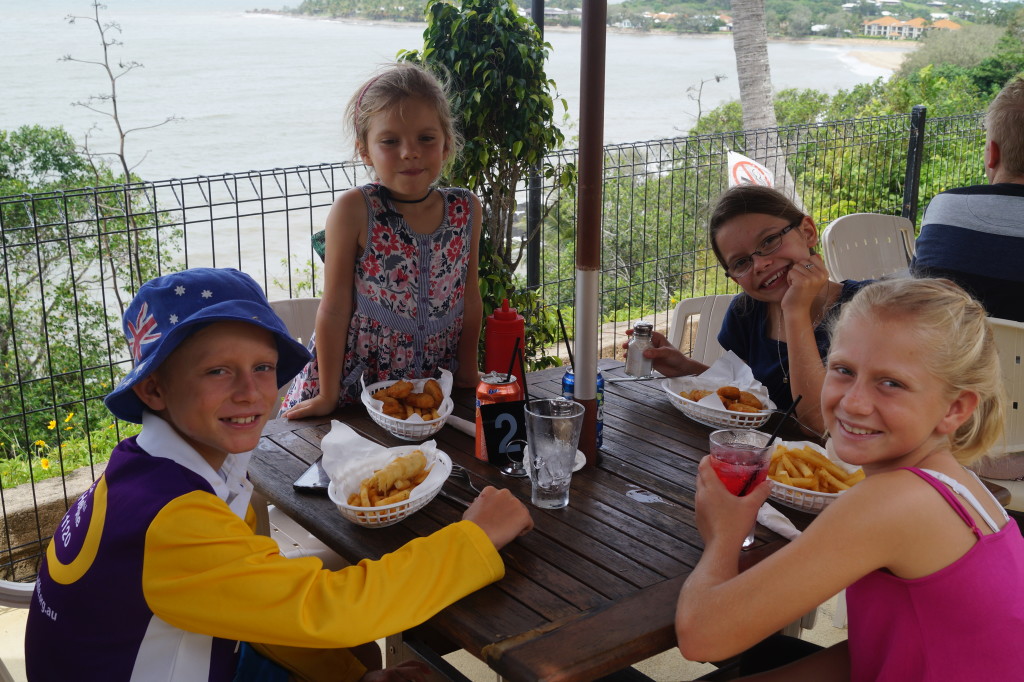
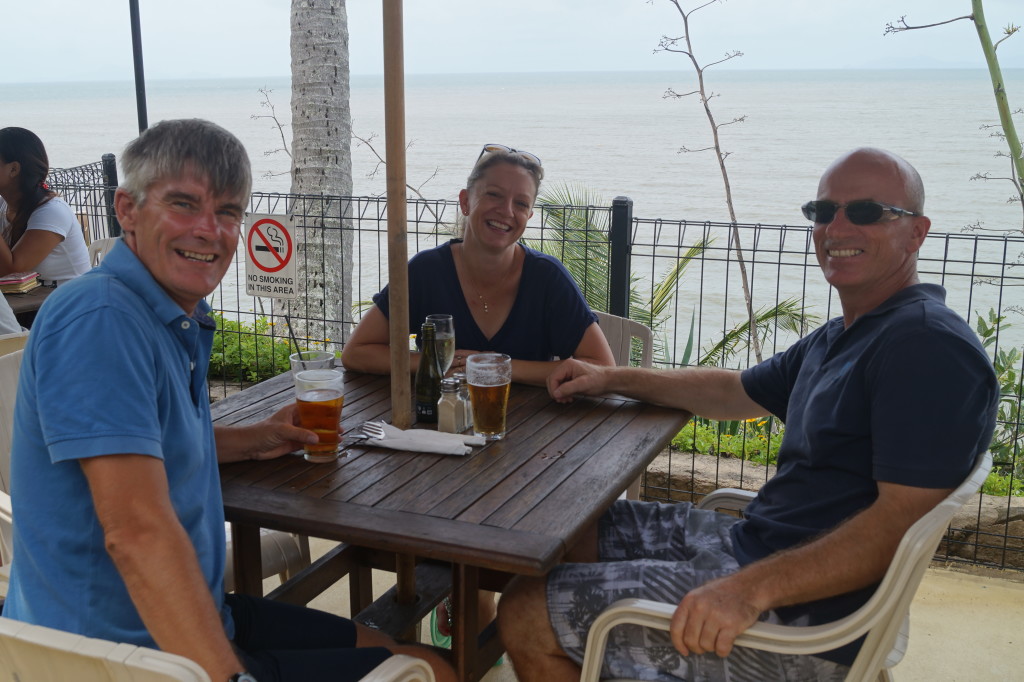
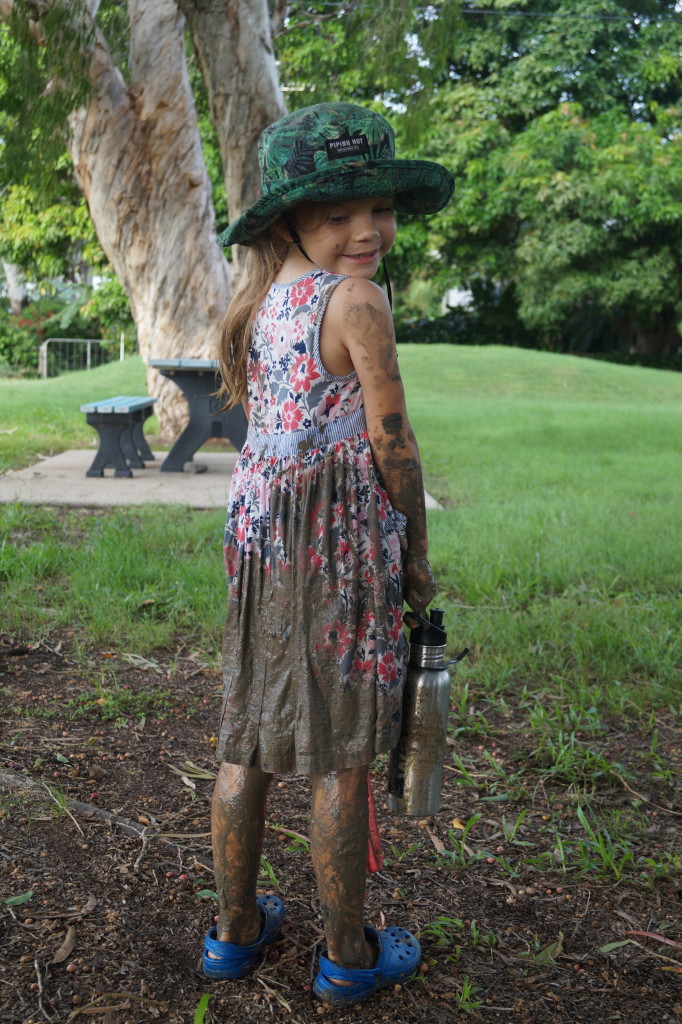
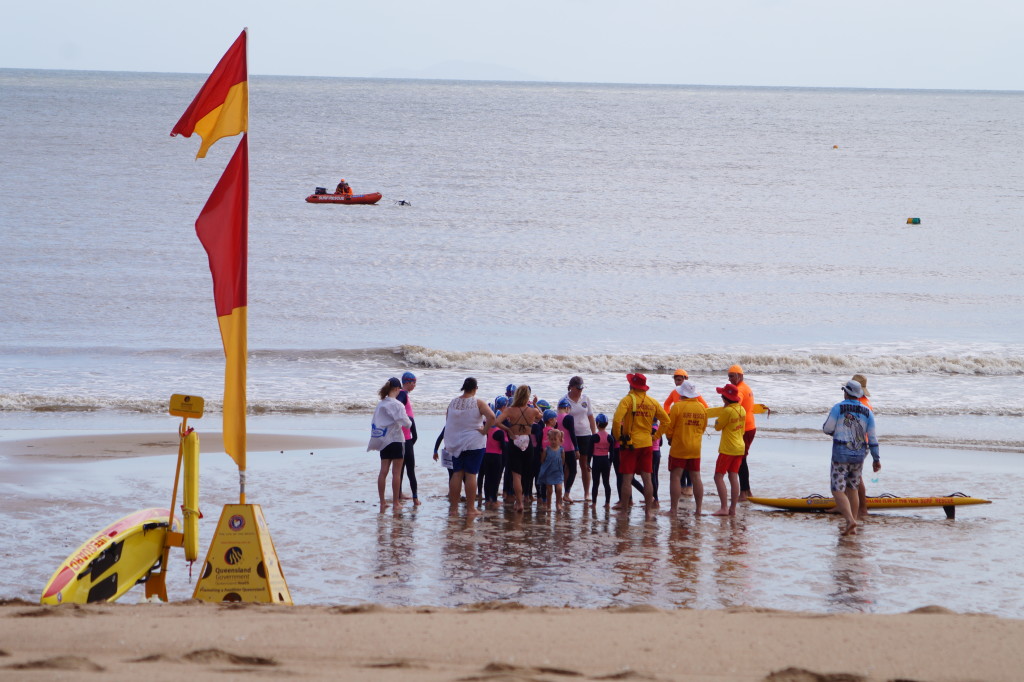
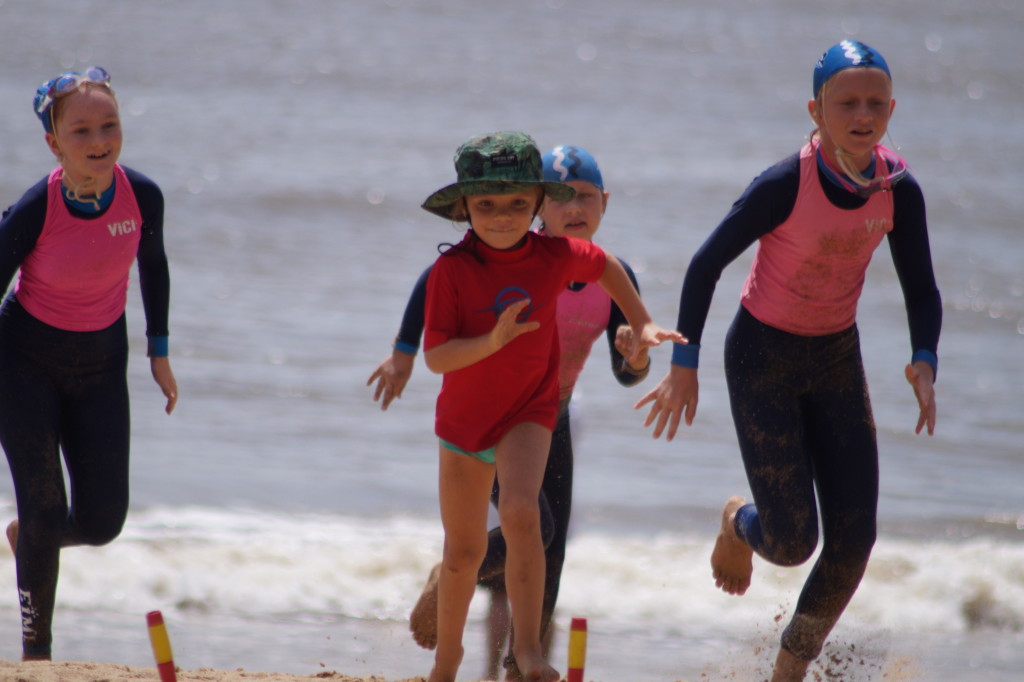
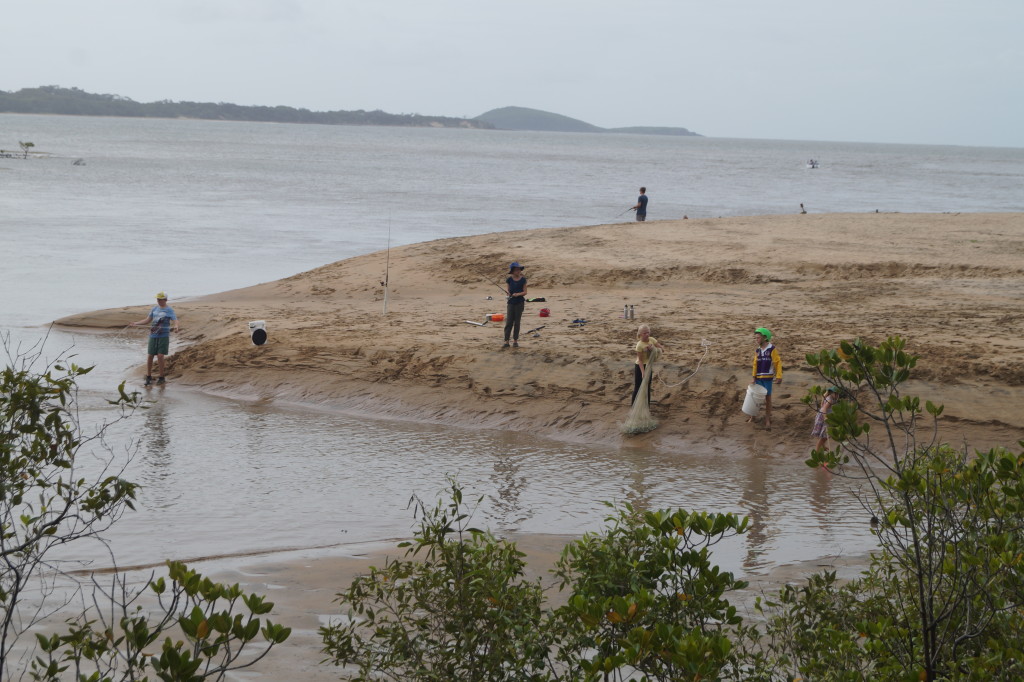
A couple of days later, as we walked down to the marina in Airlie Beach, we were very excited to see our home for the next 3 nights: the tall ship "Solway Lass". A real 116 year old beauty with a colourful history. Having started life in Europe as a sailing cargo boat, she had taken part in both World Wars, sunk twice, worked in the South Pacific and was now working as a cruising ship around the Whitsundays. She had space for 30 passengers and 6 crew in relative comfort.

We boarded the ship just after dark and motored across to near Whitsunday Island. In the morning we watched the 7 kilometre white sandy Whitehaven Beach pass as we ate breakfast. We all got knitted out in the not-so-sexy but life-saving stinger suits to protect us from the killer irukandji and box jelly fish, for our time on the perfect beach.
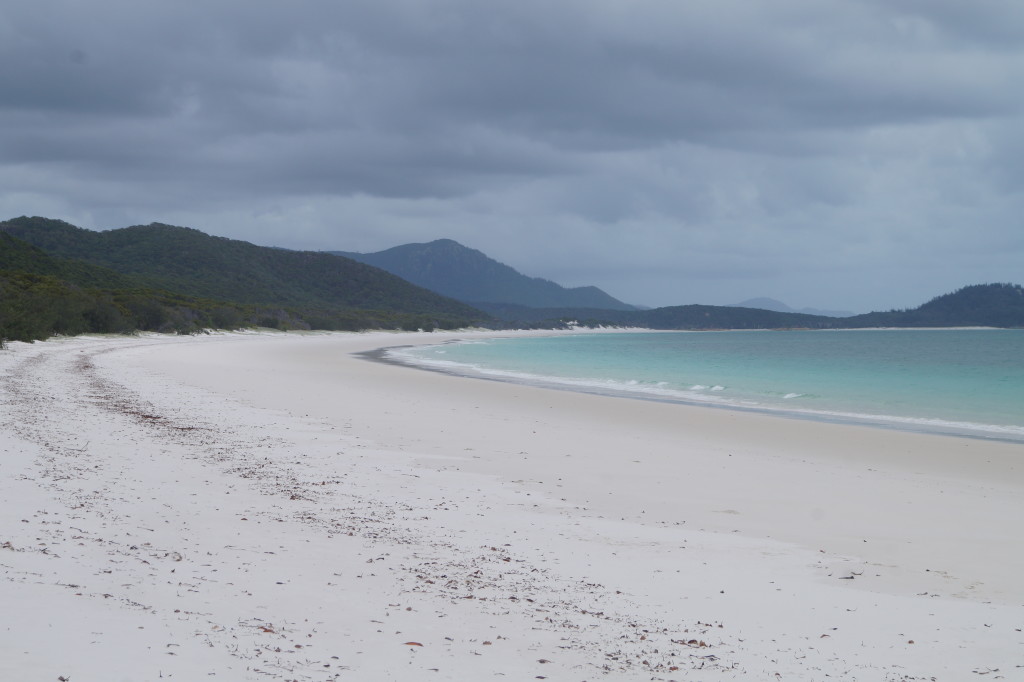
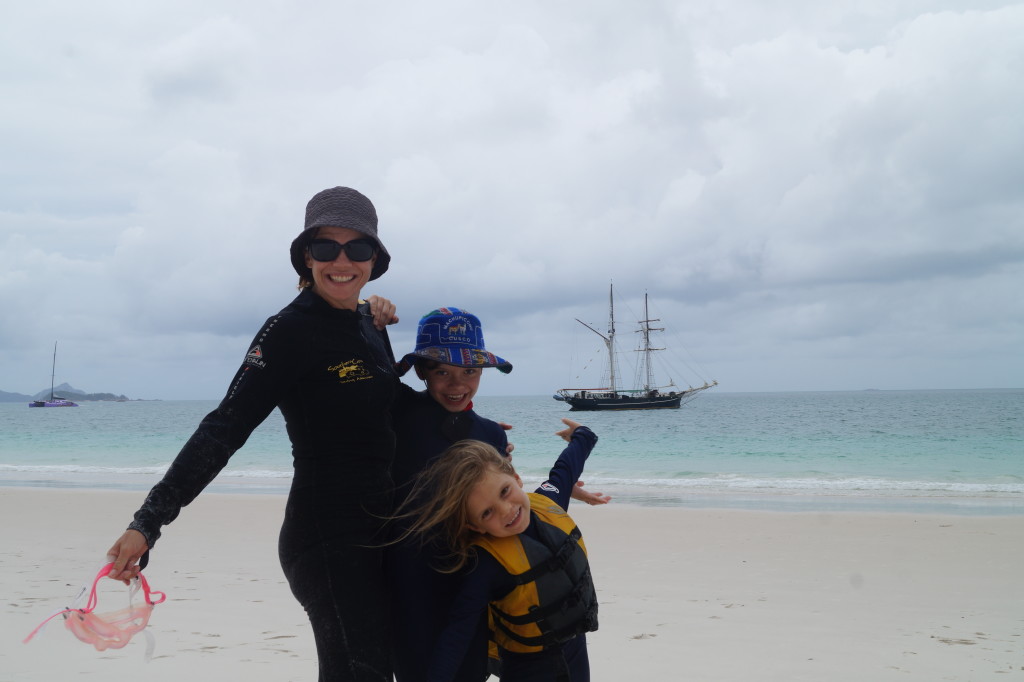
After lunch we hiked up a hill further round on the island to view the perfect sand swirls and azure waters at Tongue Bay. The water was so clear we could see rays hanging out in the shallows far below us.
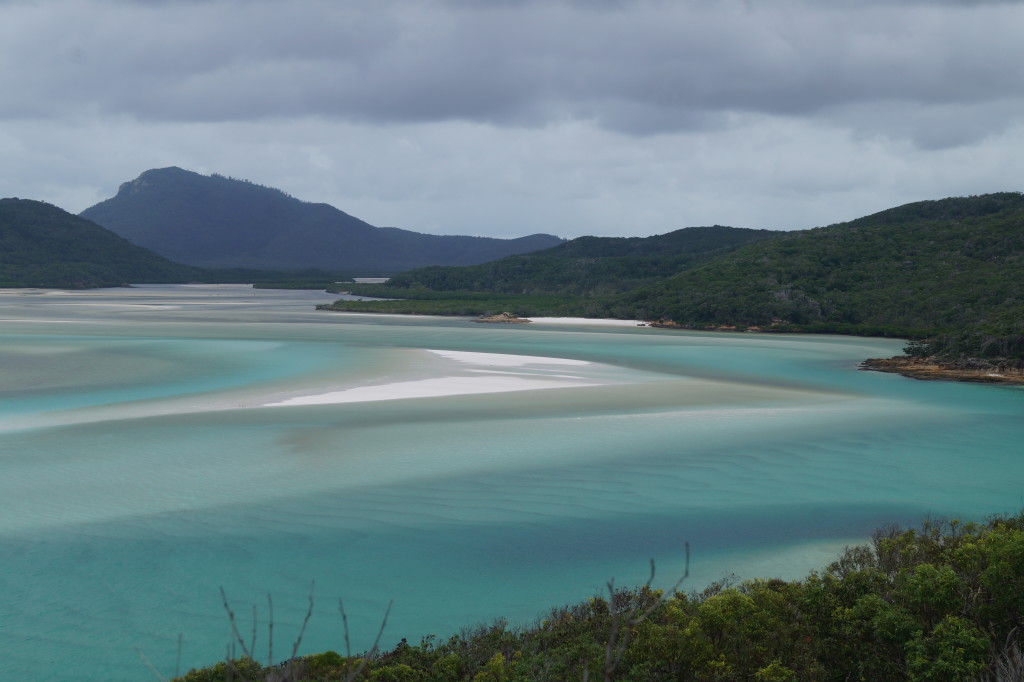
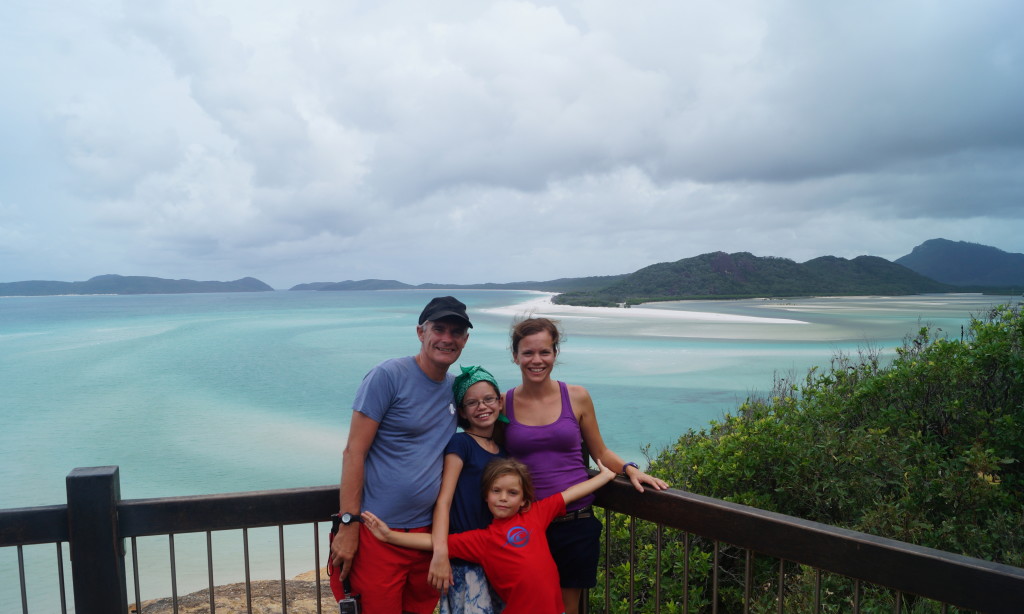
It was wonderful to be on such a historical boat, especially when the crew got out 8 of her 10 sails to sail that afternoon between the islands. With her sails bellowing and the deckhands scampering up the rigging, it felt that we had all gone back in time. It was really impressive when the sails were up, especially after watching the crew unfurling the sails way up high on the mast. There must have been over a 100 different ropes attached to different parts of the sails and tied to the posts around the deck. It was really amazing teamwork by Chris the Skipper and Bee and Steve the Deckhands to hoist all the sails; position them correctly; and after we arrived at our mooring to tie all the sails away and tidy up the ropes in the dark.
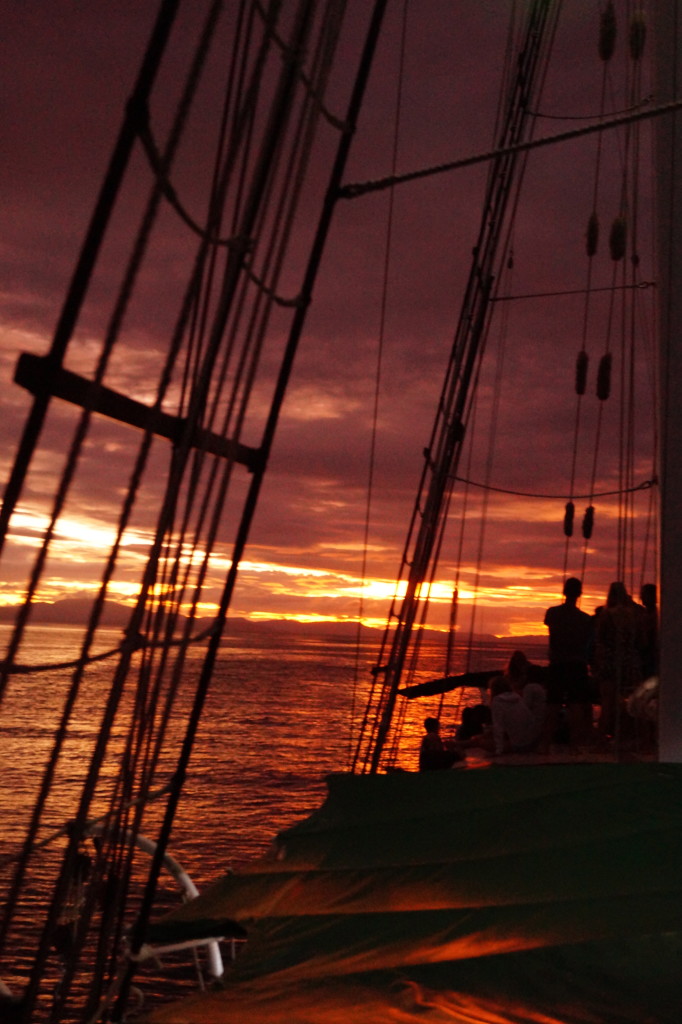
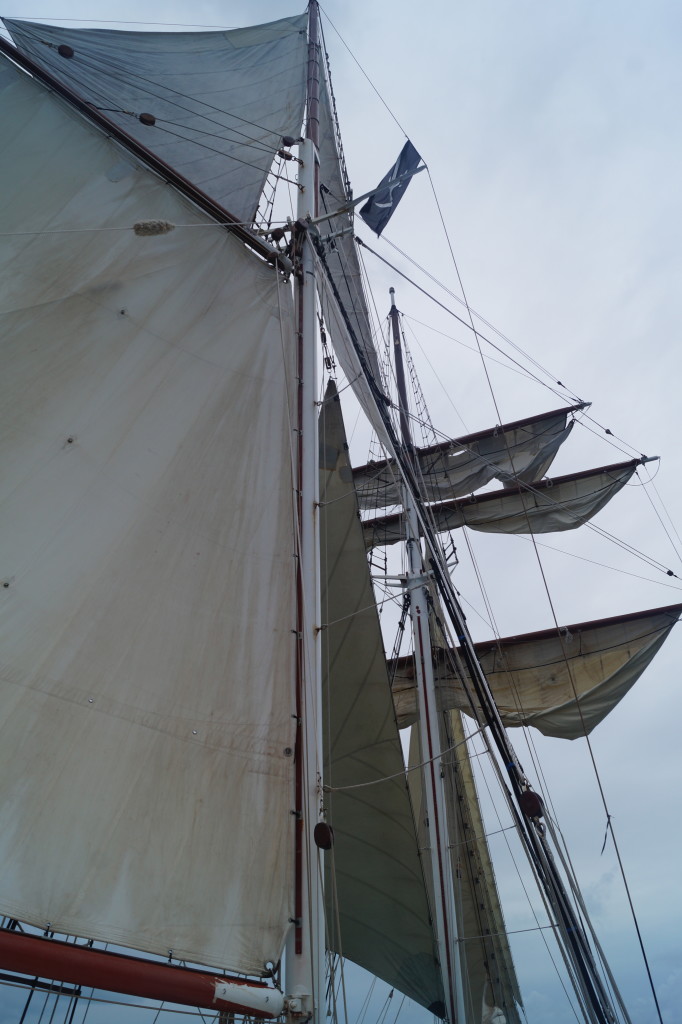
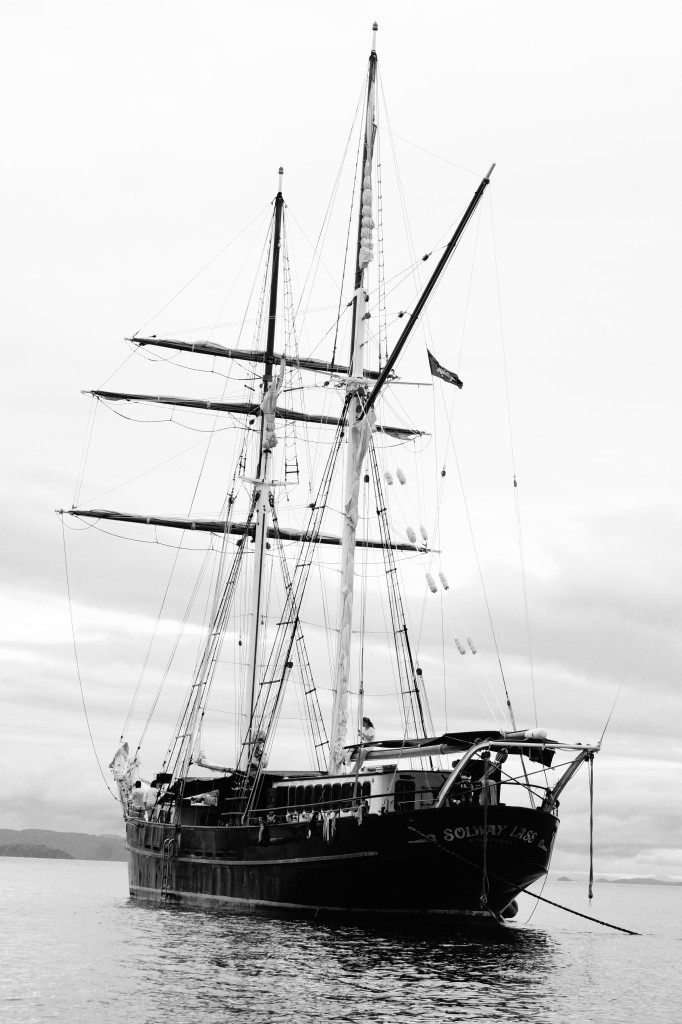
All the crew and passengers were fabulous with the girls, the only children onboard, chatting and playing with them. The girls even got to help out and raise the main stay sail, when we were out sailing. They even had pirate costumes on board, so Lucy truly got into the spirit of things - whipping the crew with her cat-o-nine tails.
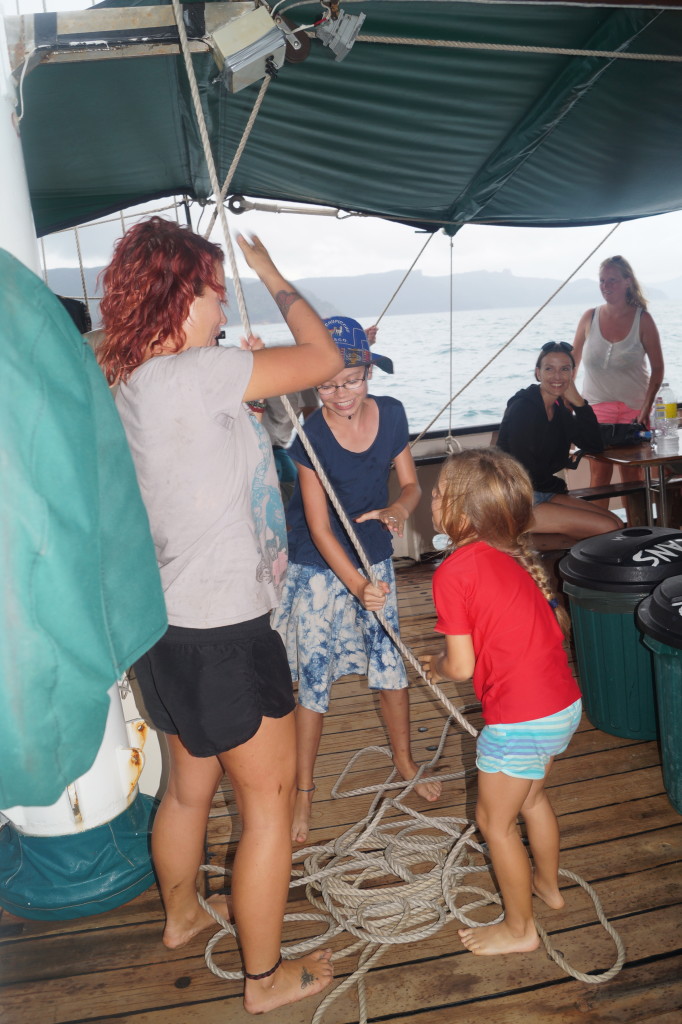
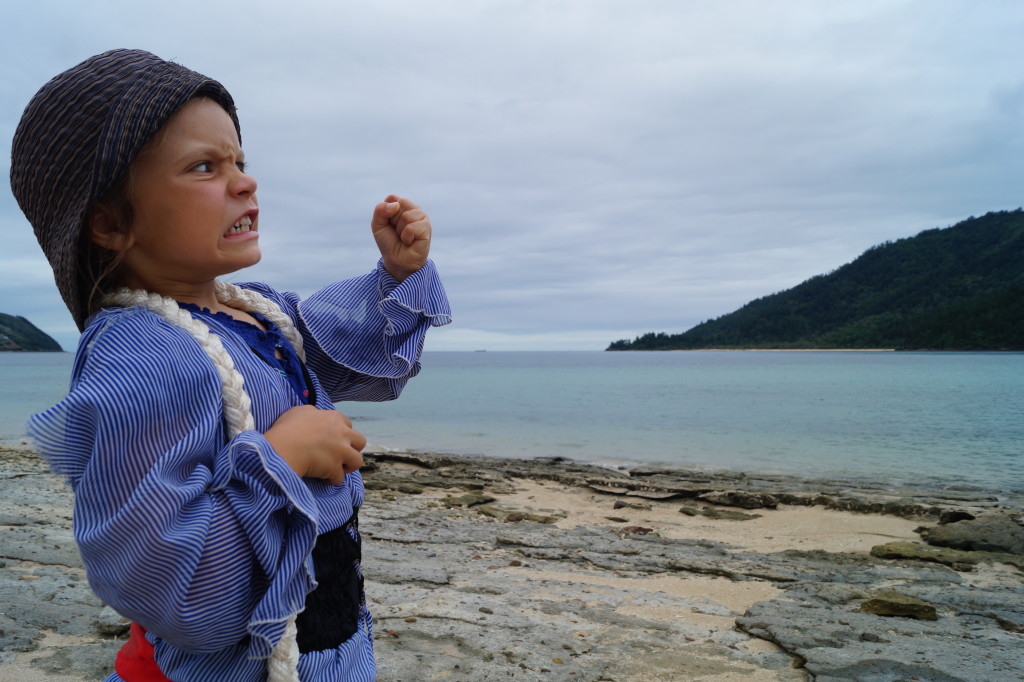
That night as we were waiting for another delicious meal we watched as a group of Giant Travally made short work of the squid attracted to the ship's light. The waters just off the side of the boat were churning with large silver shapes and black ink with the efficient hunters working quickly. Steve was just itching to get a fishing rod out.
The following day was set aside for snorkeling on the reef, the amount of fish below the surface was astounding. Although it was cloudy, the visibility underwater was perfect. There were huge schools of fish; jewel coloured corals; turquoise clams; brightly coloured parrot fish munching on the coral; and a huge, mid-sex change, Hump-headed Maori Wrasse nicknamed Pricilla. Once the girls got cold they jumped in the support dinghies with the wonderful crew, so we could continue. The swimming wasn't difficult, especially as they provided a pool noodle to use, so you could just float gently facedown. It was very peaceful watching the soft coral wafting in the sea currents with fish darting between the tentacles. That afternoon back at the boat after another amazing snorkel, I jumped back in the water to swim with 5 car-tyre sized bat fish. While Steve tried out the Tarzan swing off the front of the ship, dropping into the deep water. The girls directed proceedings from the main deck.

DCIM100GOPRO
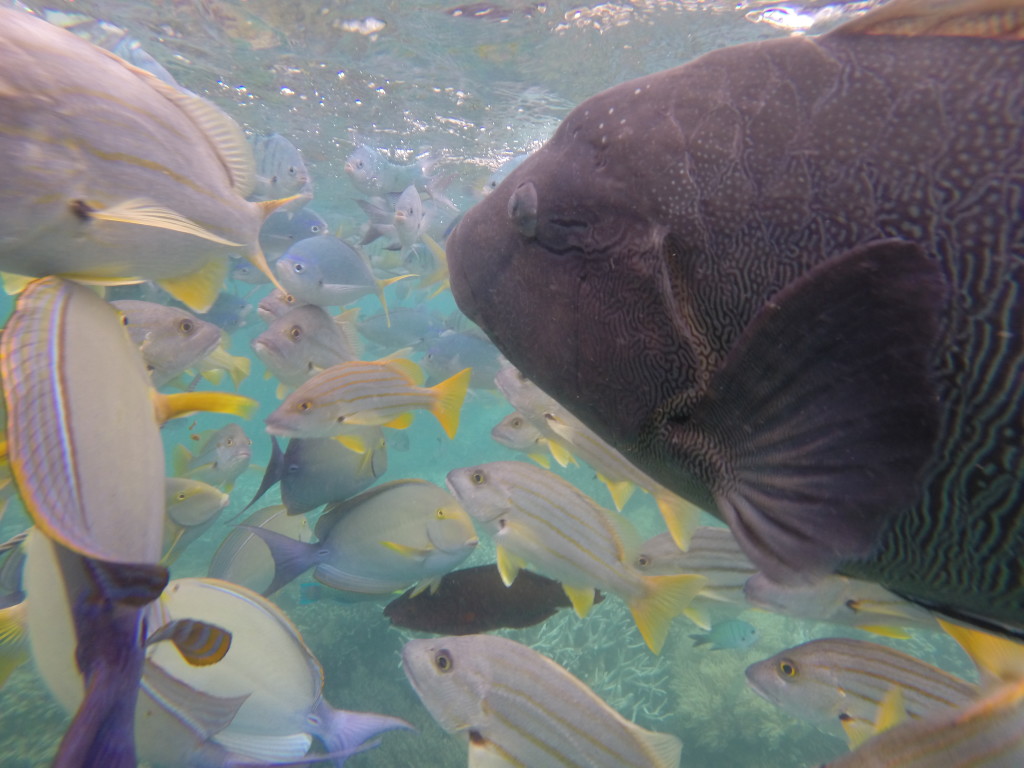
DCIM100GOPRO
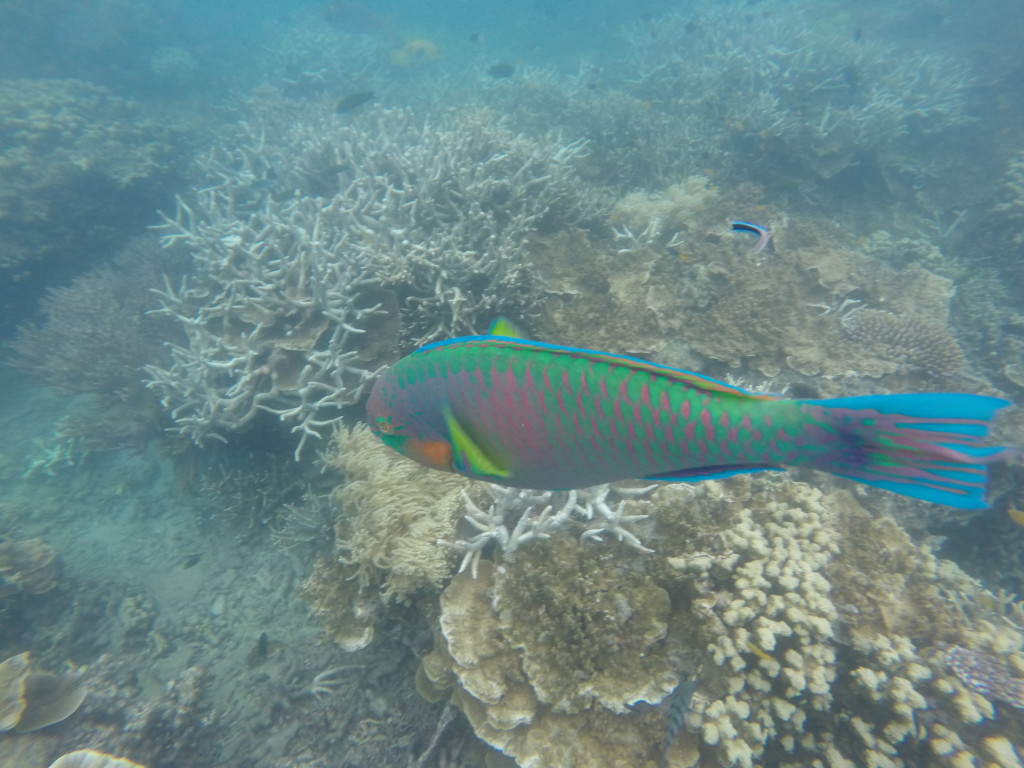
DCIM100GOPRO
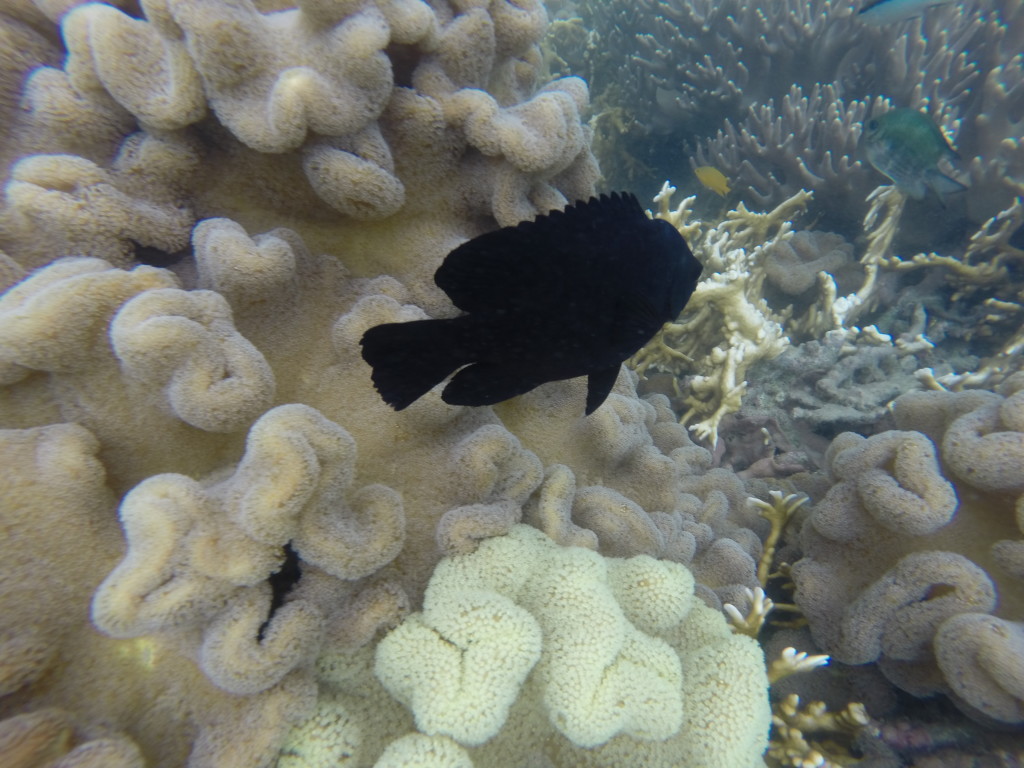
DCIM100GOPRO
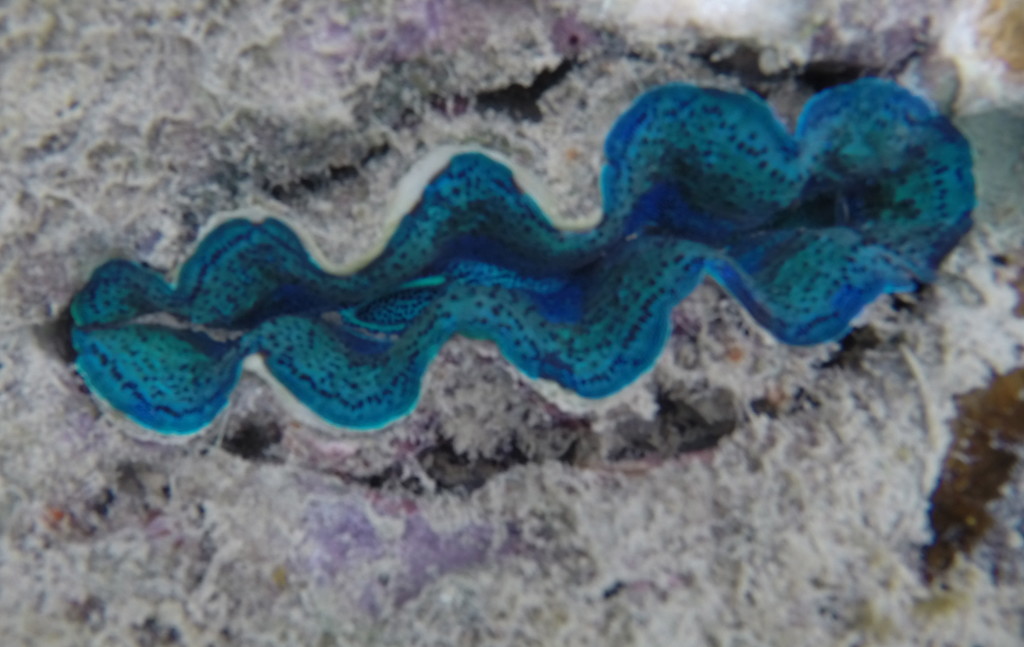
DCIM100GOPRO
Yes!¦we found Nemo!
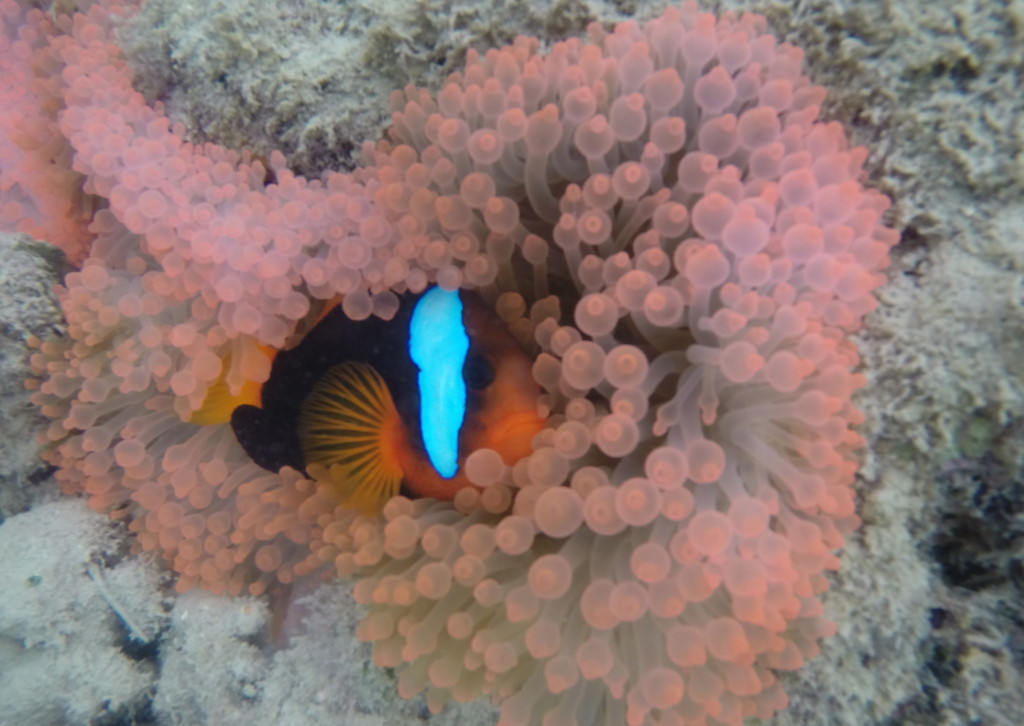
DCIM100GOPRO
Snorkling on our third and last day was off Langford sand spit, where the coral was just a few metres off the beach. When we first arrived at high tide, the spit was just sliver of sand surrounded by water with a few seagulls resting on it. As the tide dropped the spit joined up to Langford Island. It was easy to swim on and off the beach. A sea turtle passed by Steve so closely that he could have stuck out his hand and touched it. Alisha and I jumped back into the water to see a green turtle tucked under a bit of the coral.
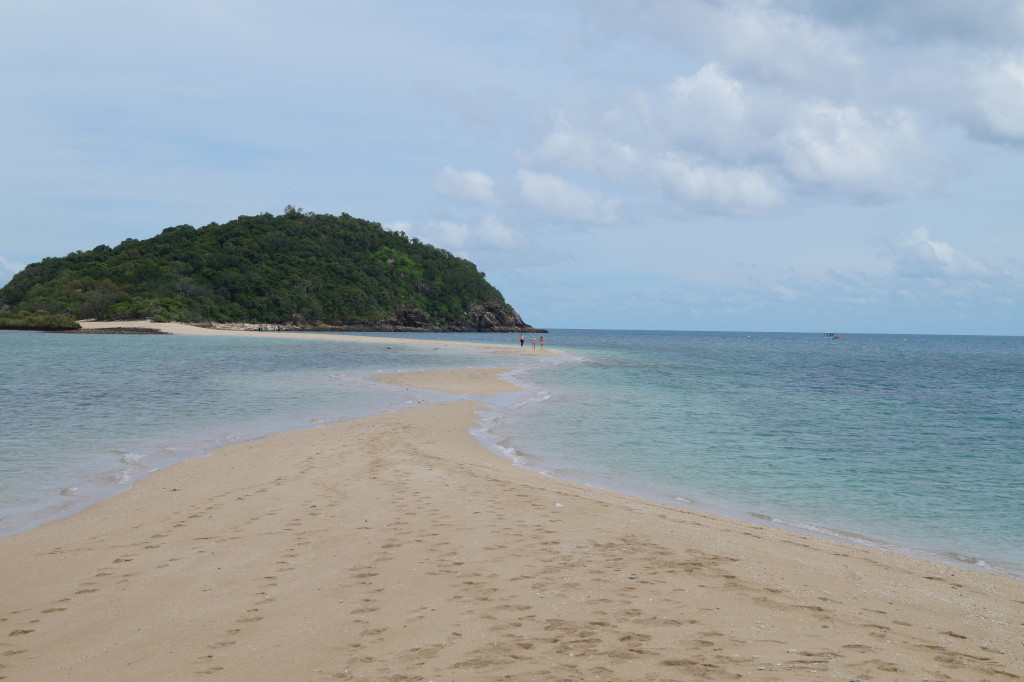
We had a wonderful few days on the Solway Lass, it seemed to be special feature upon special feature: the Great Barrier Reef; a tall ship sailing experience; the beautiful craggy Whitsundays Islands; and even better than all that it was beautifully calm so no one was seasick!
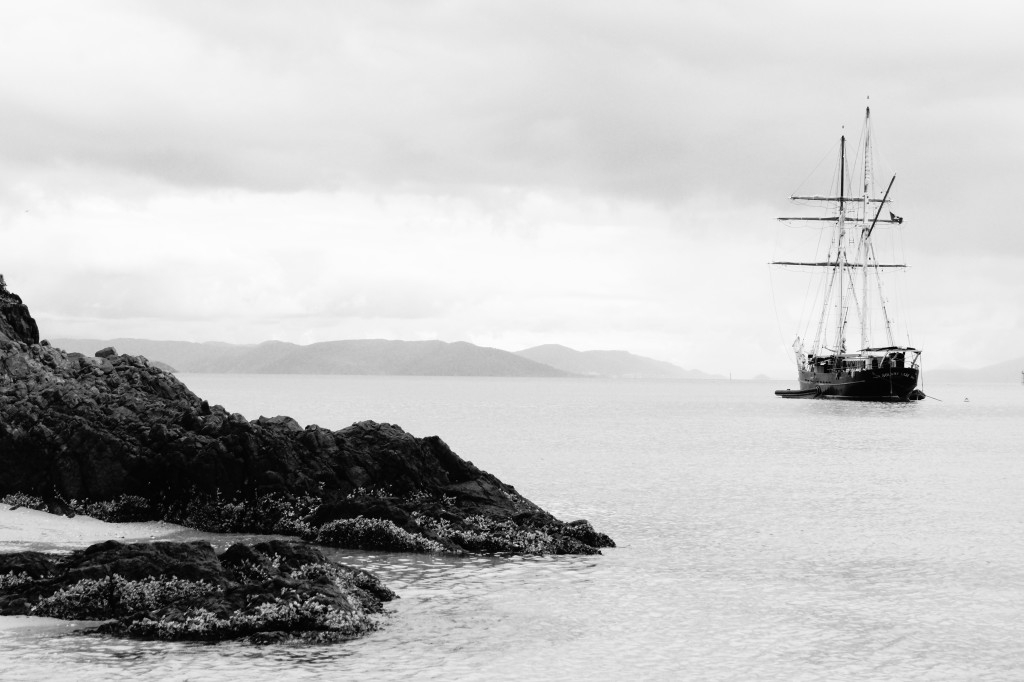
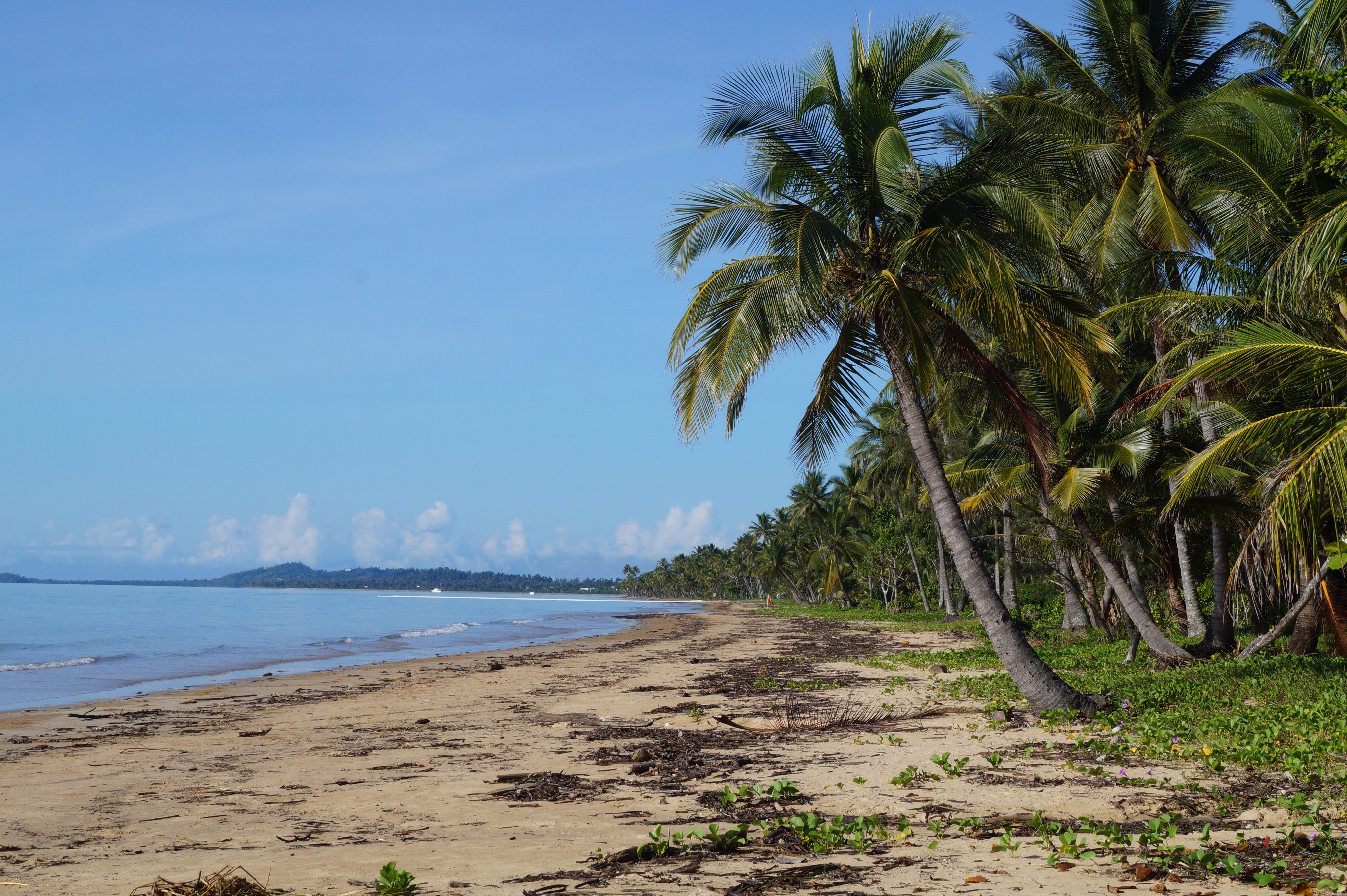 Mission Beach is famed for being an area where two world heritage sites meet; the wet tropical rainforest and the Great Barrier Reef. It is also a keen skydiving centre and we kept seeing the skydivers landing on the beach after jumping out of a plane from 14,000 feet. We were not tempted. We were though keen to see the rainforest and in particular to see a Cassowary. The Cassowary is Australia's largest bird and can grow to almost 2 metres in height. It is very rare but the Mission Beach area is one of the best places to see them. We did two short walks to try and see one but without success. The walks were short because of the heat and also the number of biting insects once you got into the forest.
Mission Beach is famed for being an area where two world heritage sites meet; the wet tropical rainforest and the Great Barrier Reef. It is also a keen skydiving centre and we kept seeing the skydivers landing on the beach after jumping out of a plane from 14,000 feet. We were not tempted. We were though keen to see the rainforest and in particular to see a Cassowary. The Cassowary is Australia's largest bird and can grow to almost 2 metres in height. It is very rare but the Mission Beach area is one of the best places to see them. We did two short walks to try and see one but without success. The walks were short because of the heat and also the number of biting insects once you got into the forest.
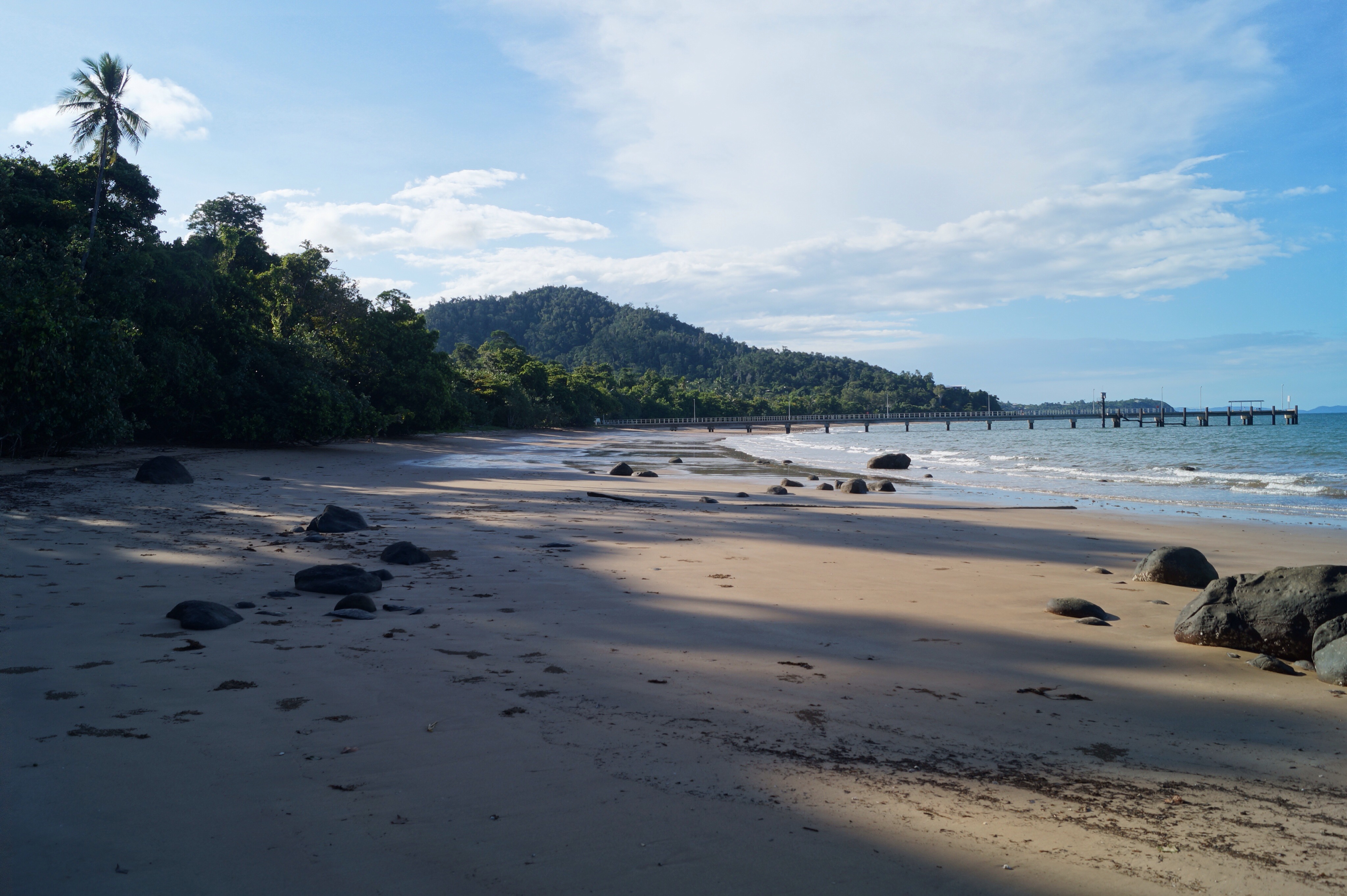

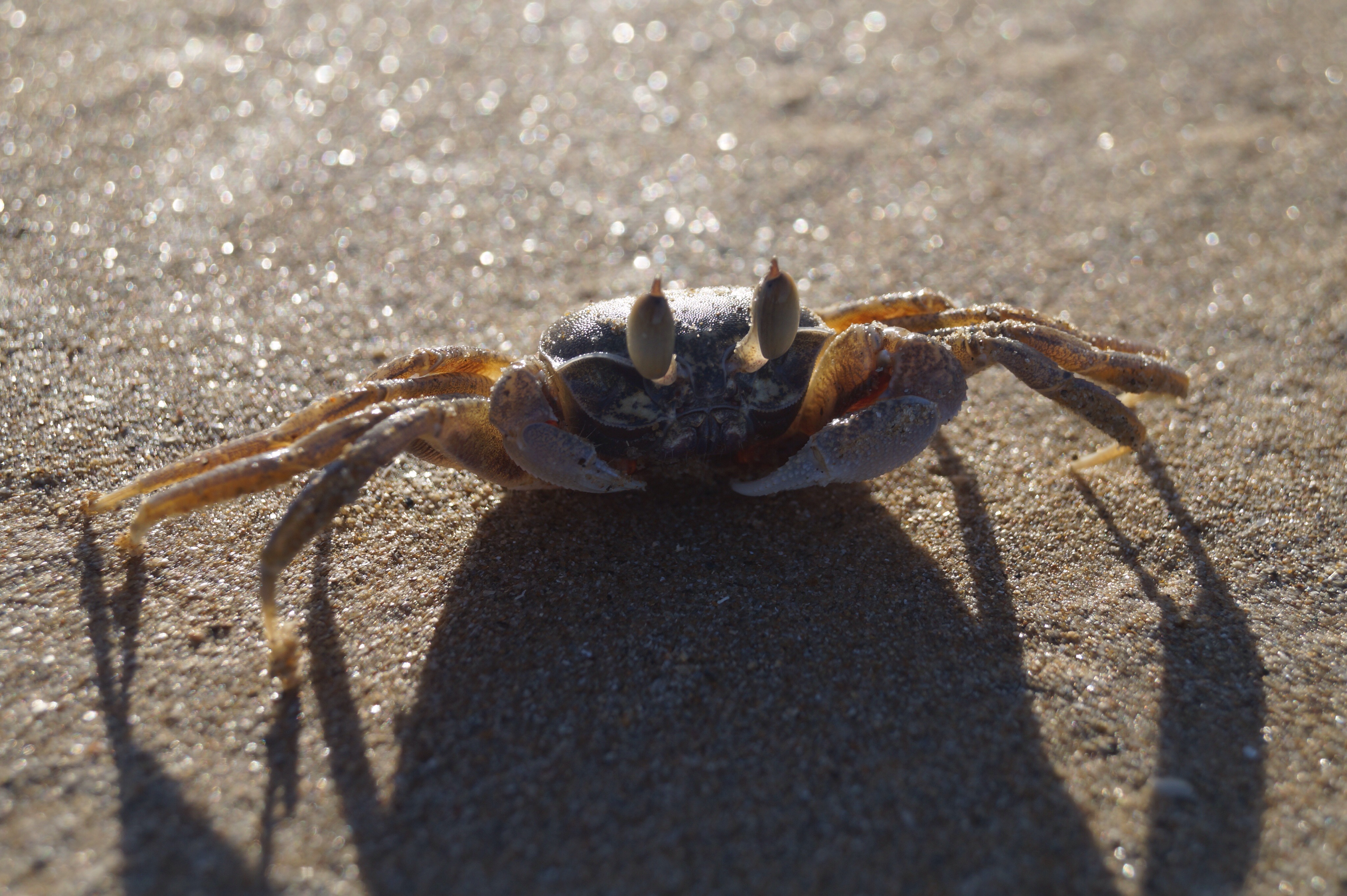
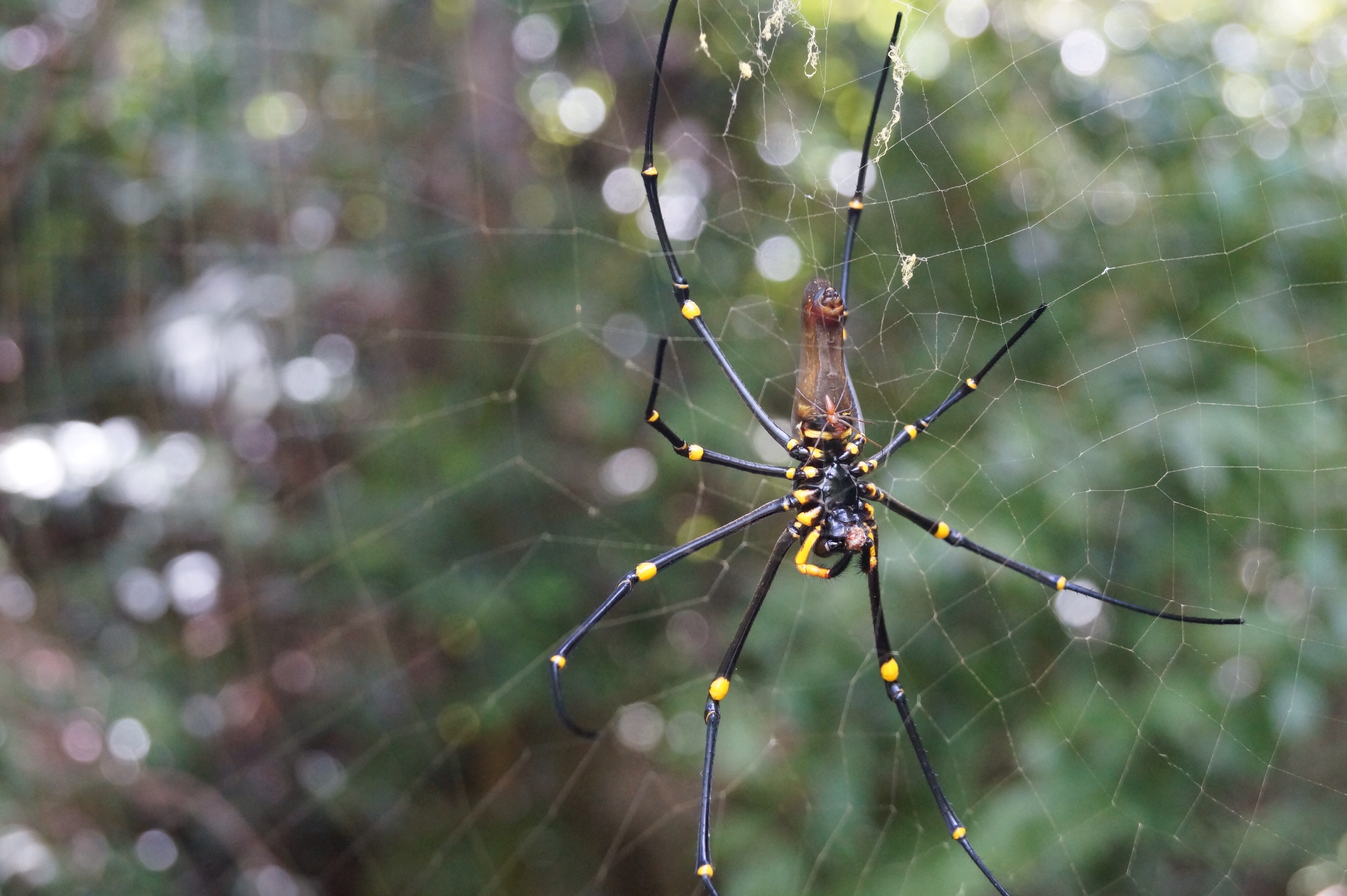
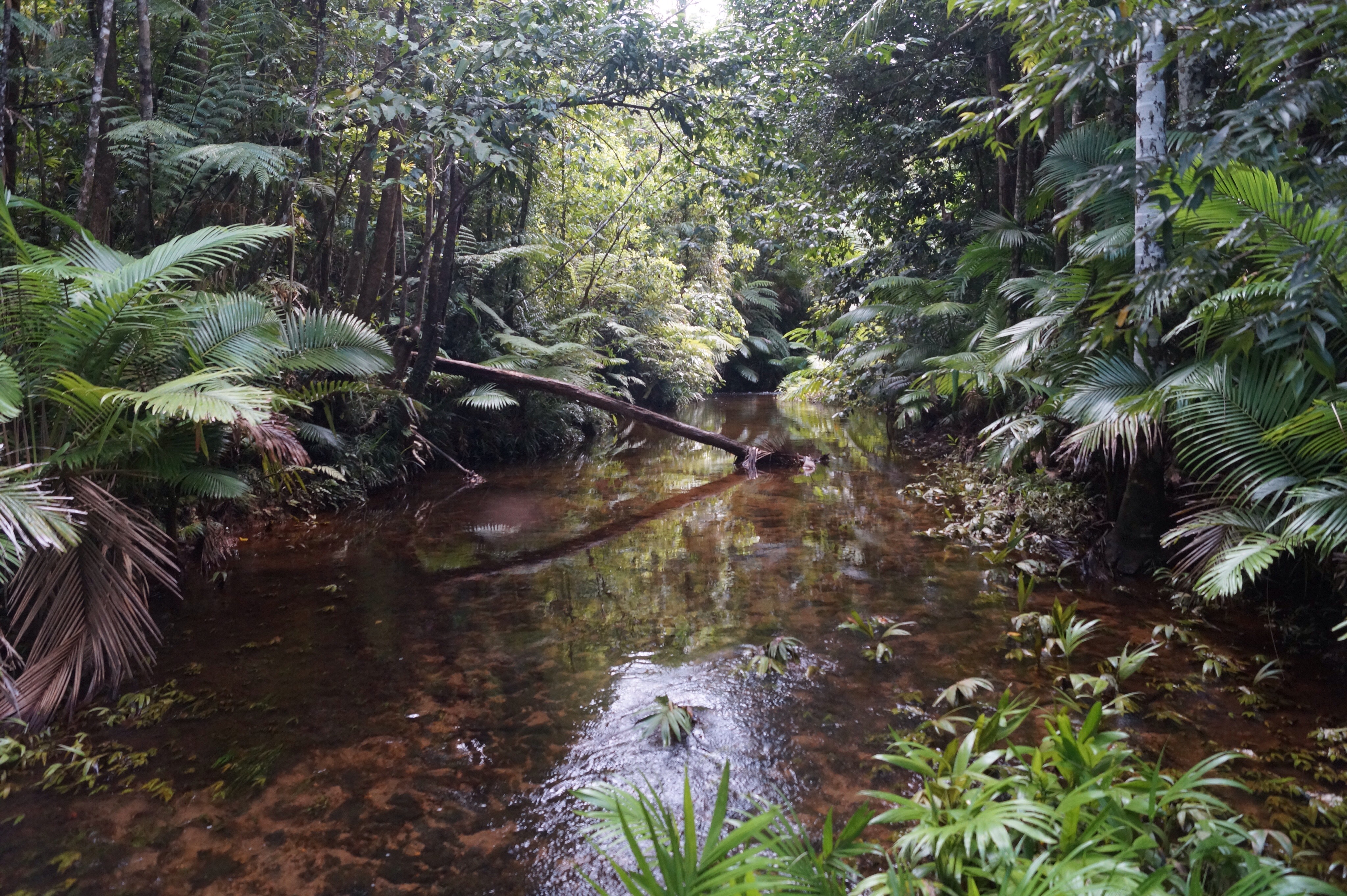 We also did one very hot job while we were there. We decided to change one of our wheels to put a better tyre on the front. We have changed tyres a couple of times but there had always been people to help so this time as we had lots of time, Gilly and I decided to see if we could do it by ourselves. You need to understand that our wheels weigh 120kgs, so changing them is quite a job. Well anyway we learnt we can not do it easily without help. We were able to get the wheel off, the spare off the rack and to change the wheel but we needed help (due to the weight) to get the wheel back in the spare wheel rack so let's hope we don't need to do this somewhere remote although I have some ideas if we need to do this.
We also did one very hot job while we were there. We decided to change one of our wheels to put a better tyre on the front. We have changed tyres a couple of times but there had always been people to help so this time as we had lots of time, Gilly and I decided to see if we could do it by ourselves. You need to understand that our wheels weigh 120kgs, so changing them is quite a job. Well anyway we learnt we can not do it easily without help. We were able to get the wheel off, the spare off the rack and to change the wheel but we needed help (due to the weight) to get the wheel back in the spare wheel rack so let's hope we don't need to do this somewhere remote although I have some ideas if we need to do this.
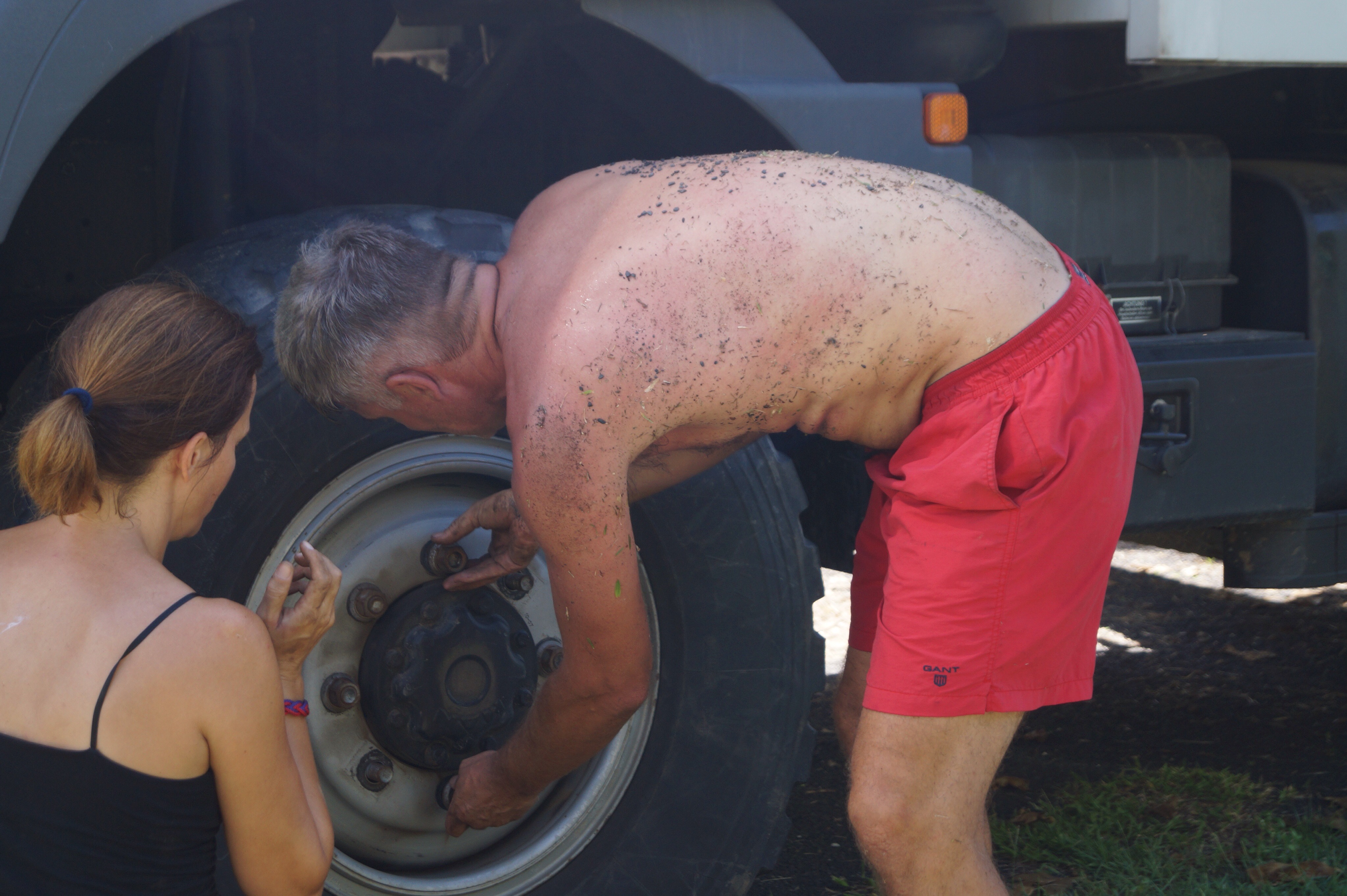 The rest of the time we just sat on the beach in the shade as there was often a nice cooling breeze. In fact the best time was once it had got dark. It was full moon time and the moon reflected beautifully off the sea. Sitting there with a glass of wine in hand, with the gentle sound of the ocean and a breeze taking away the heat was wonderful. Life felt pretty good.
On our way up to Mission Beach we had spent a couple of nights in Paluma National Park. This was just inland from the coast and there was some lovely swimming holes that you could swim in. Not that swimming in rivers here is risk free as we are now in Saltwater Crocodile country. However the swimming hole we chose was a popular one and was known to be crocodile free. It was the weekend when we were there so was quite busy with families enjoying the cool refreshing water.
The rest of the time we just sat on the beach in the shade as there was often a nice cooling breeze. In fact the best time was once it had got dark. It was full moon time and the moon reflected beautifully off the sea. Sitting there with a glass of wine in hand, with the gentle sound of the ocean and a breeze taking away the heat was wonderful. Life felt pretty good.
On our way up to Mission Beach we had spent a couple of nights in Paluma National Park. This was just inland from the coast and there was some lovely swimming holes that you could swim in. Not that swimming in rivers here is risk free as we are now in Saltwater Crocodile country. However the swimming hole we chose was a popular one and was known to be crocodile free. It was the weekend when we were there so was quite busy with families enjoying the cool refreshing water.
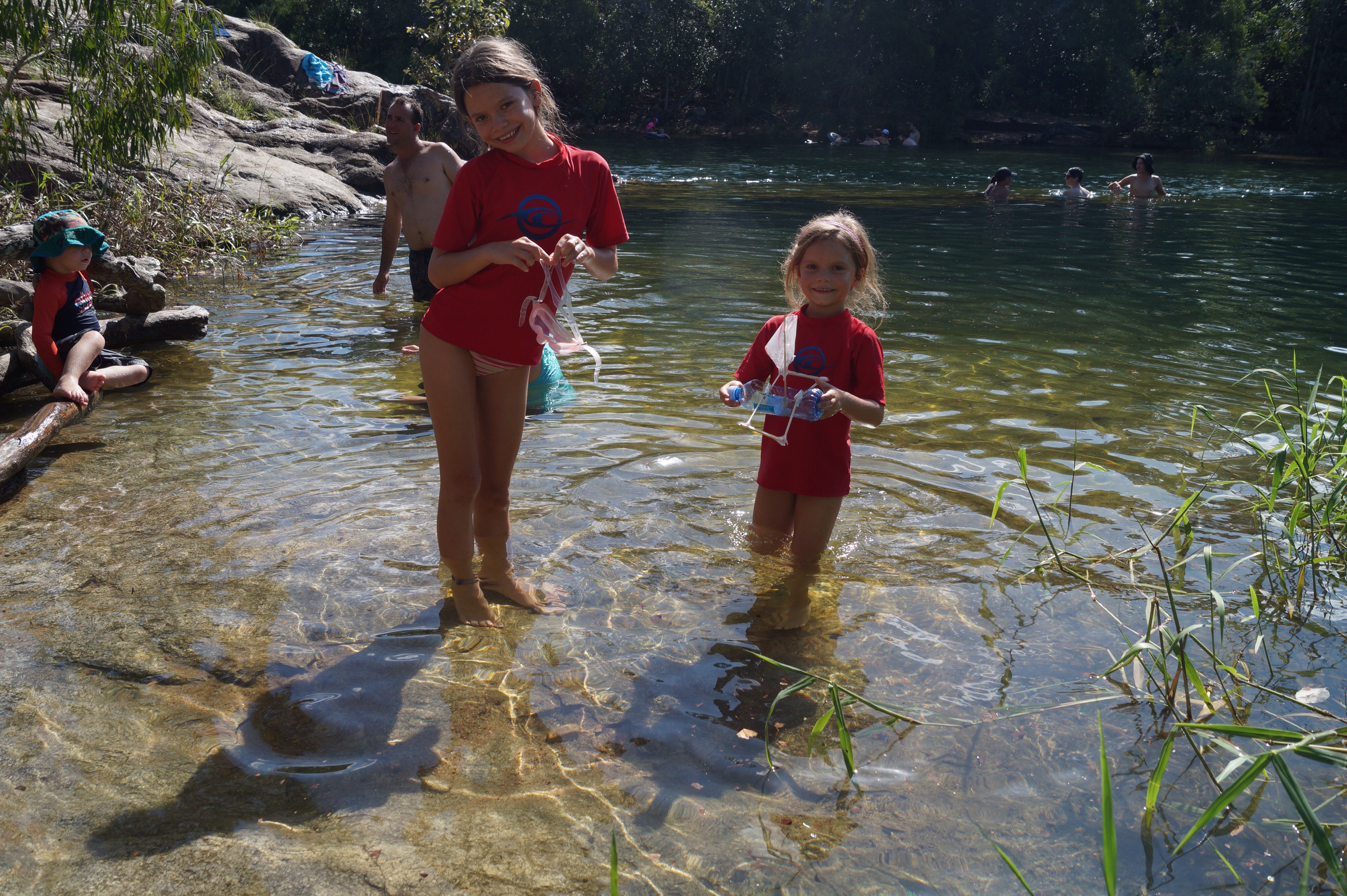
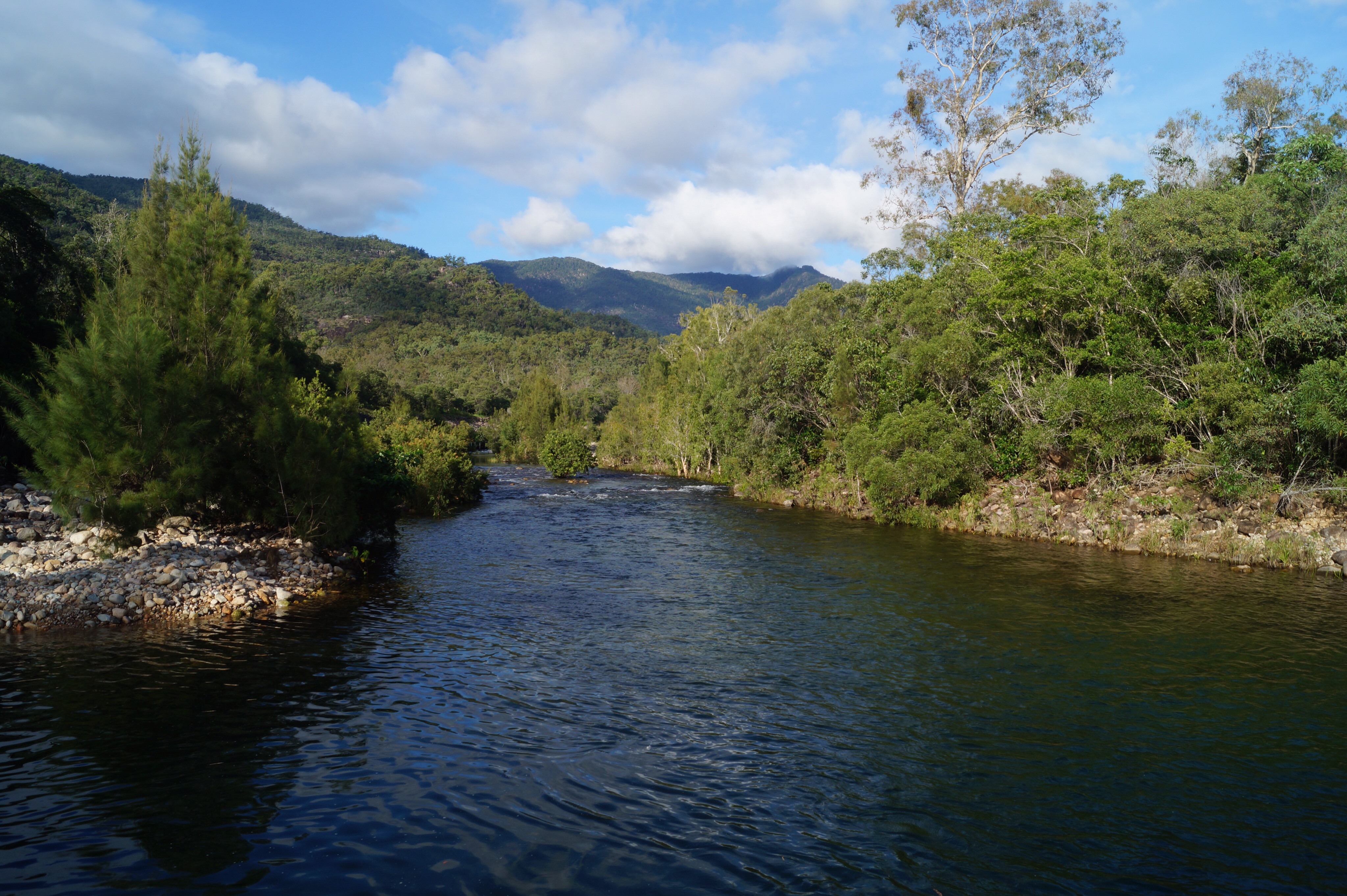 After Mission Beach we drove up to Cairns where we decide to do one last trip out to the reef. We boarded a large Catamaran for the 60km trip to one of the outer reefs. Once we were out there we had to swim about 50 to 100 metres from the boat to be able to snorkel over the top of the reef. There was a bit of a swell so swimming was not the easiest so we were really impressed that Lucy bravely swam out with us. The swim was worth it as the corals below were amazing and as it was a sunny day the colours really lit up the ocean. The fish were also every shade of colour darting in and out of the corals.
After Mission Beach we drove up to Cairns where we decide to do one last trip out to the reef. We boarded a large Catamaran for the 60km trip to one of the outer reefs. Once we were out there we had to swim about 50 to 100 metres from the boat to be able to snorkel over the top of the reef. There was a bit of a swell so swimming was not the easiest so we were really impressed that Lucy bravely swam out with us. The swim was worth it as the corals below were amazing and as it was a sunny day the colours really lit up the ocean. The fish were also every shade of colour darting in and out of the corals.
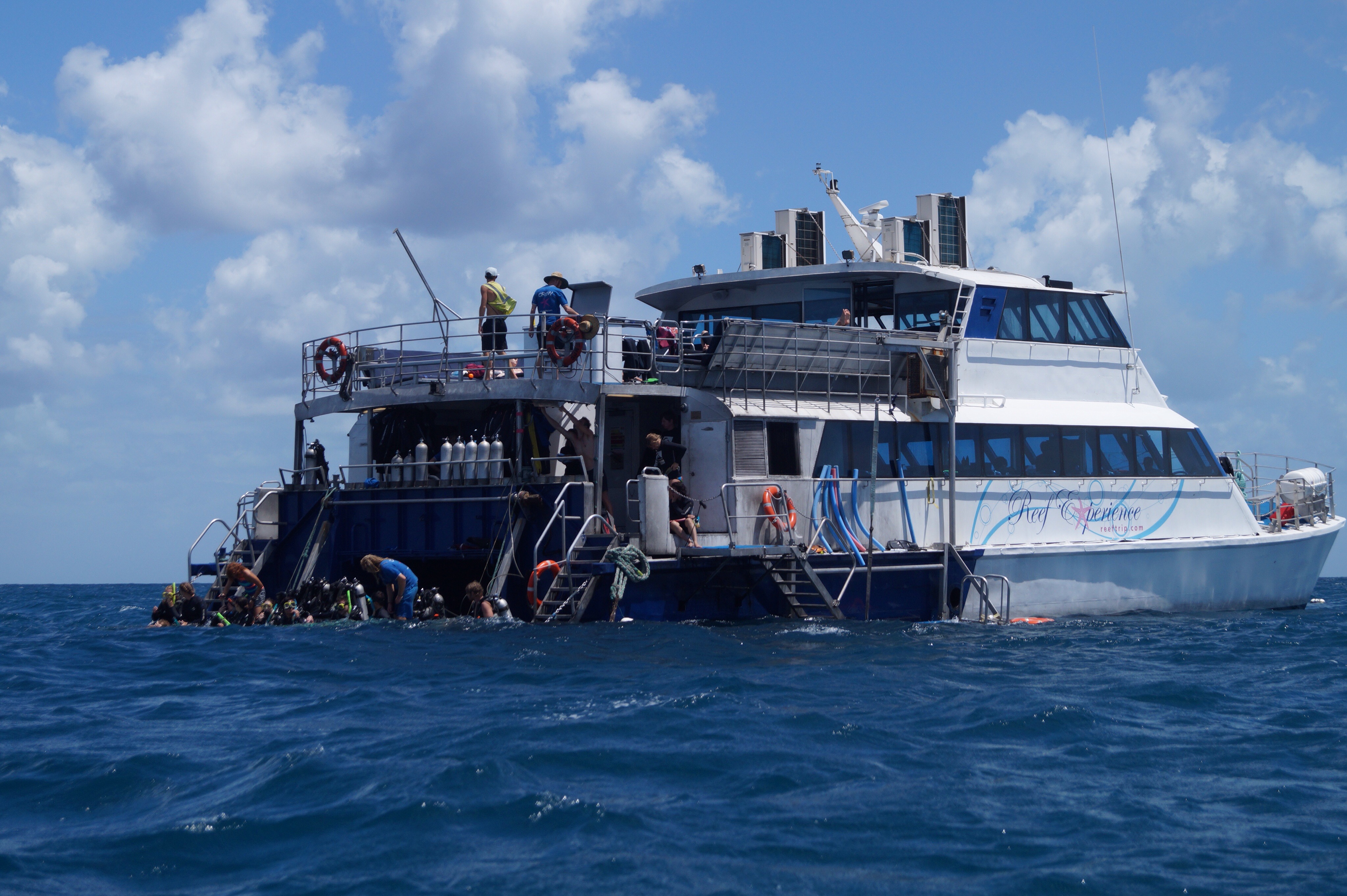

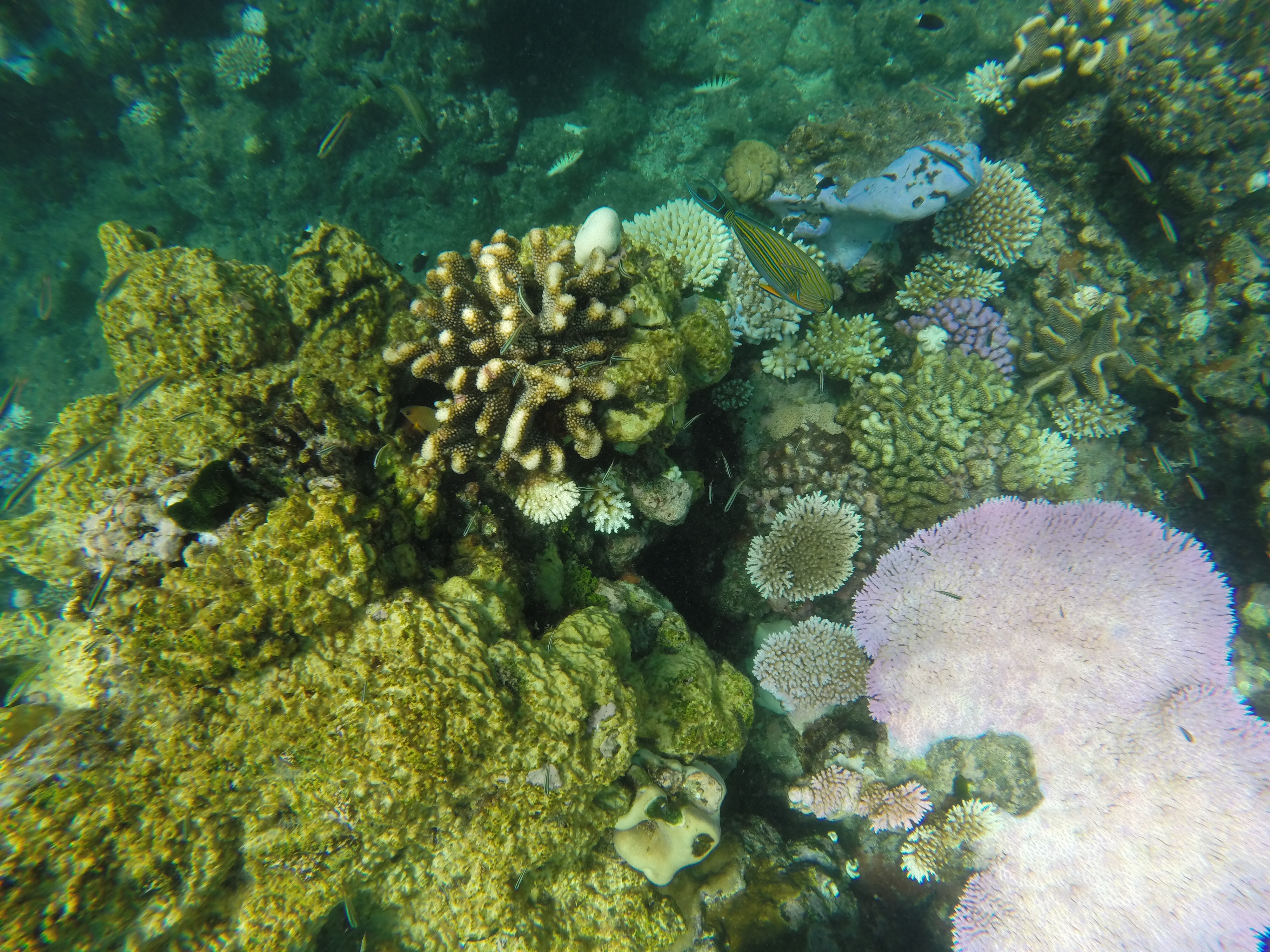

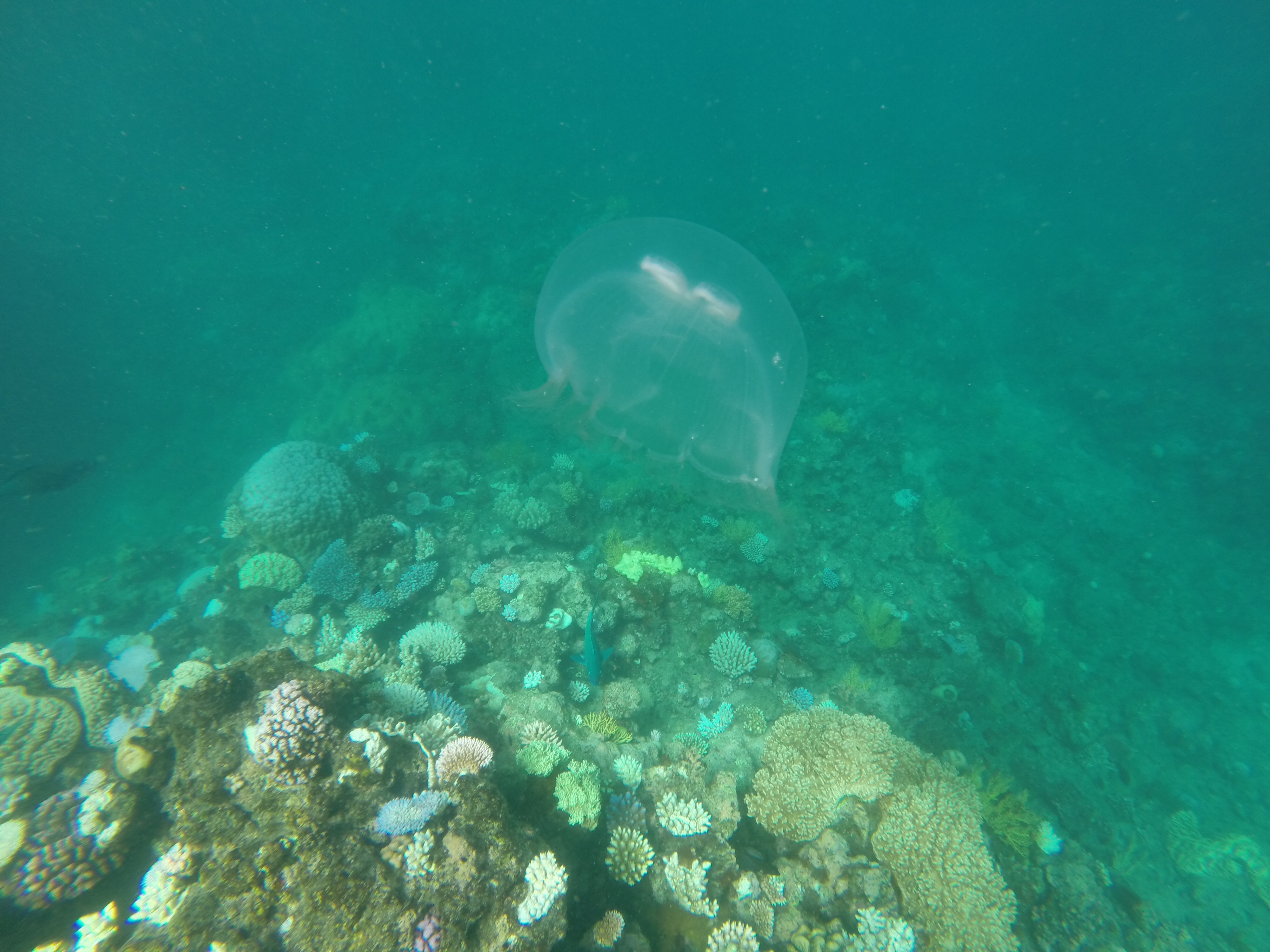
 We have now been fortunate to do three trips out to the reef. It is undoubtably spectacular but as much of it is quite a way out in the ocean it is not the easiest trip and you have to work hard to see its beauty. For us the best trip was on Solway Lass around the Whitsundays as here the reef is close to islands and in lagoons and this makes the snorkelling much easier.
Cairns is the last town of any size (population about 150,000) we will be visiting for quite some time so we thought we had better stock up with everything we may need. Alisha had also been suffering with a bad ear for about a week so we thought it made sense for her to visit the doctors. We have been fortunate that in 32 months of travelling this is the first time any of us have had to go to the doctors. As suspected, she had an ear infection so no swimming for Alisha for a week.
There is not a lot else to do in Cairns itself. The town is set up for a large influx of tourists who go out to the reef and various other nearby sights. It does not have its own beach but it does have a very pleasant esplanade. This is made more attractive for the girls as there are various playgrounds along the way to enjoy. Also as dusk approaches masses of fruit bats take to the sky creating quite a sight.
We have now been fortunate to do three trips out to the reef. It is undoubtably spectacular but as much of it is quite a way out in the ocean it is not the easiest trip and you have to work hard to see its beauty. For us the best trip was on Solway Lass around the Whitsundays as here the reef is close to islands and in lagoons and this makes the snorkelling much easier.
Cairns is the last town of any size (population about 150,000) we will be visiting for quite some time so we thought we had better stock up with everything we may need. Alisha had also been suffering with a bad ear for about a week so we thought it made sense for her to visit the doctors. We have been fortunate that in 32 months of travelling this is the first time any of us have had to go to the doctors. As suspected, she had an ear infection so no swimming for Alisha for a week.
There is not a lot else to do in Cairns itself. The town is set up for a large influx of tourists who go out to the reef and various other nearby sights. It does not have its own beach but it does have a very pleasant esplanade. This is made more attractive for the girls as there are various playgrounds along the way to enjoy. Also as dusk approaches masses of fruit bats take to the sky creating quite a sight.
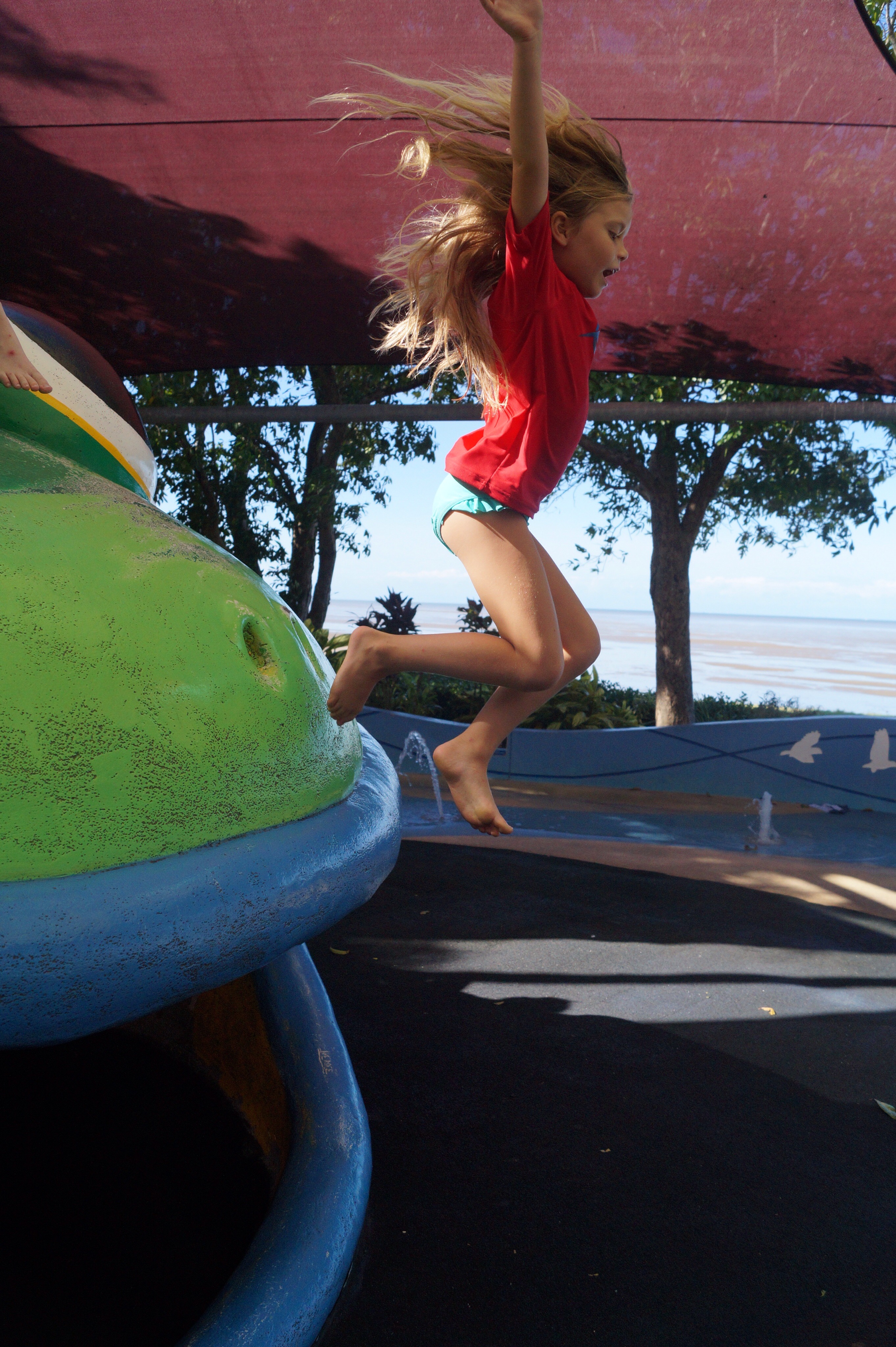
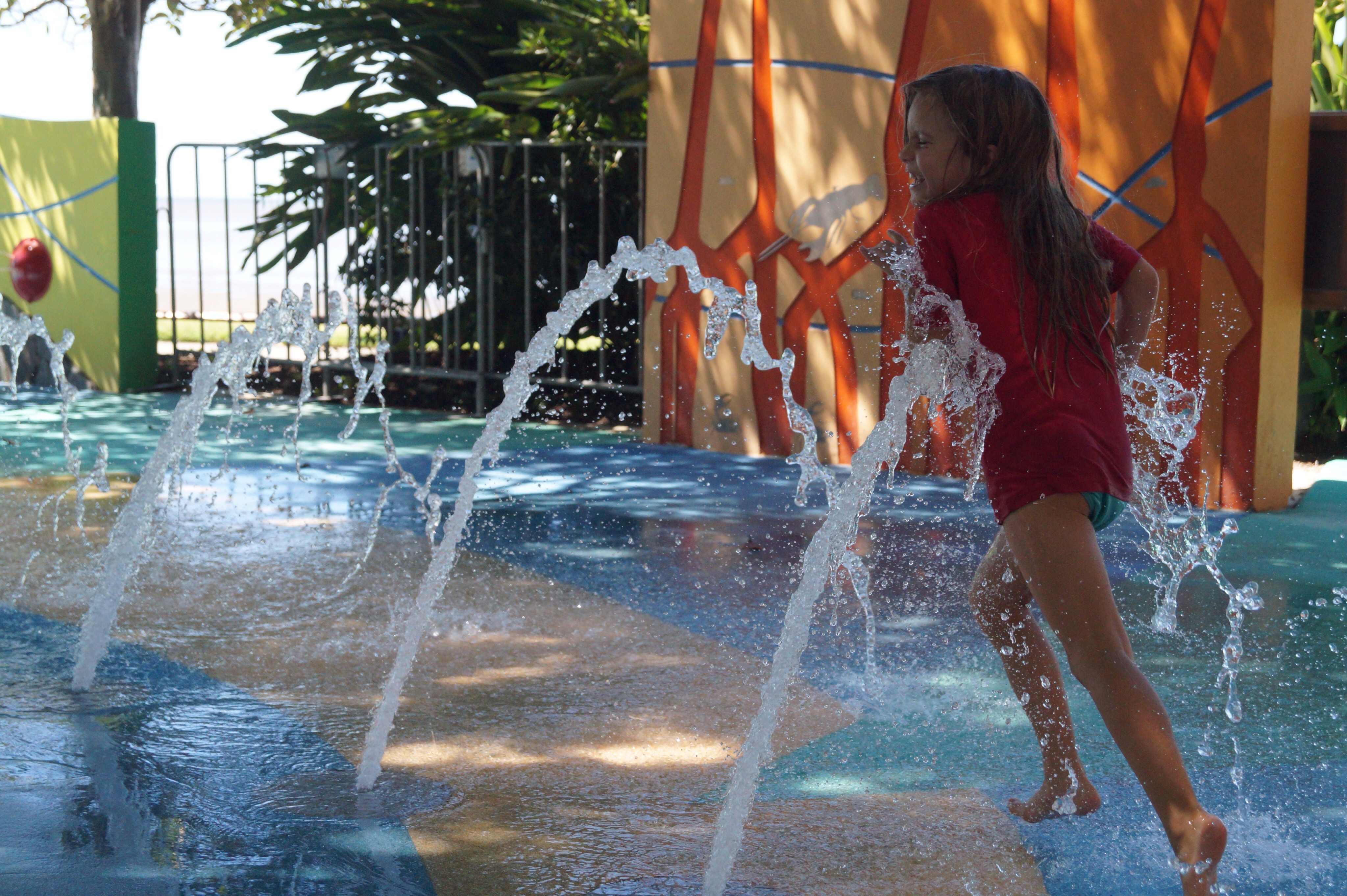
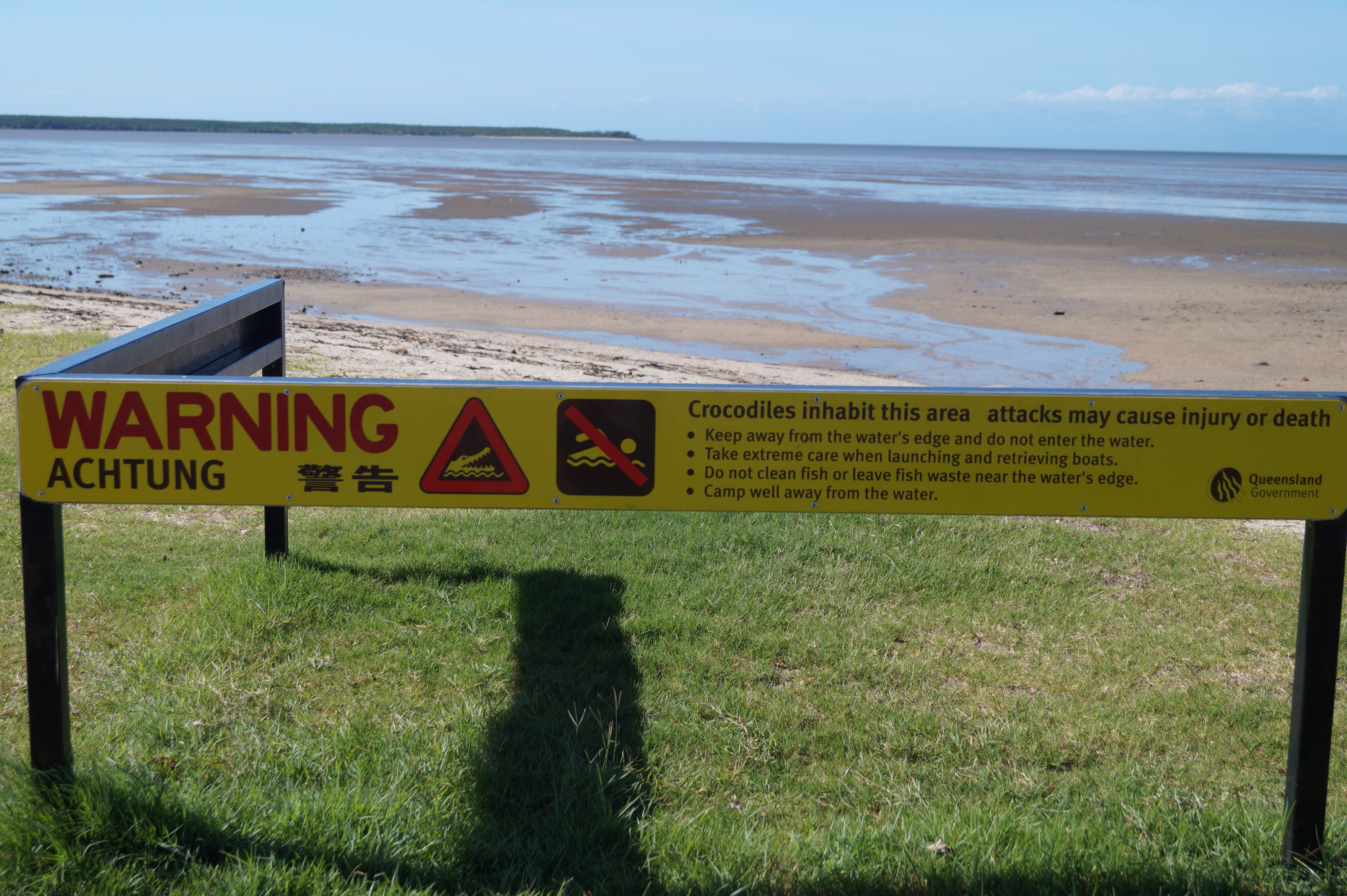
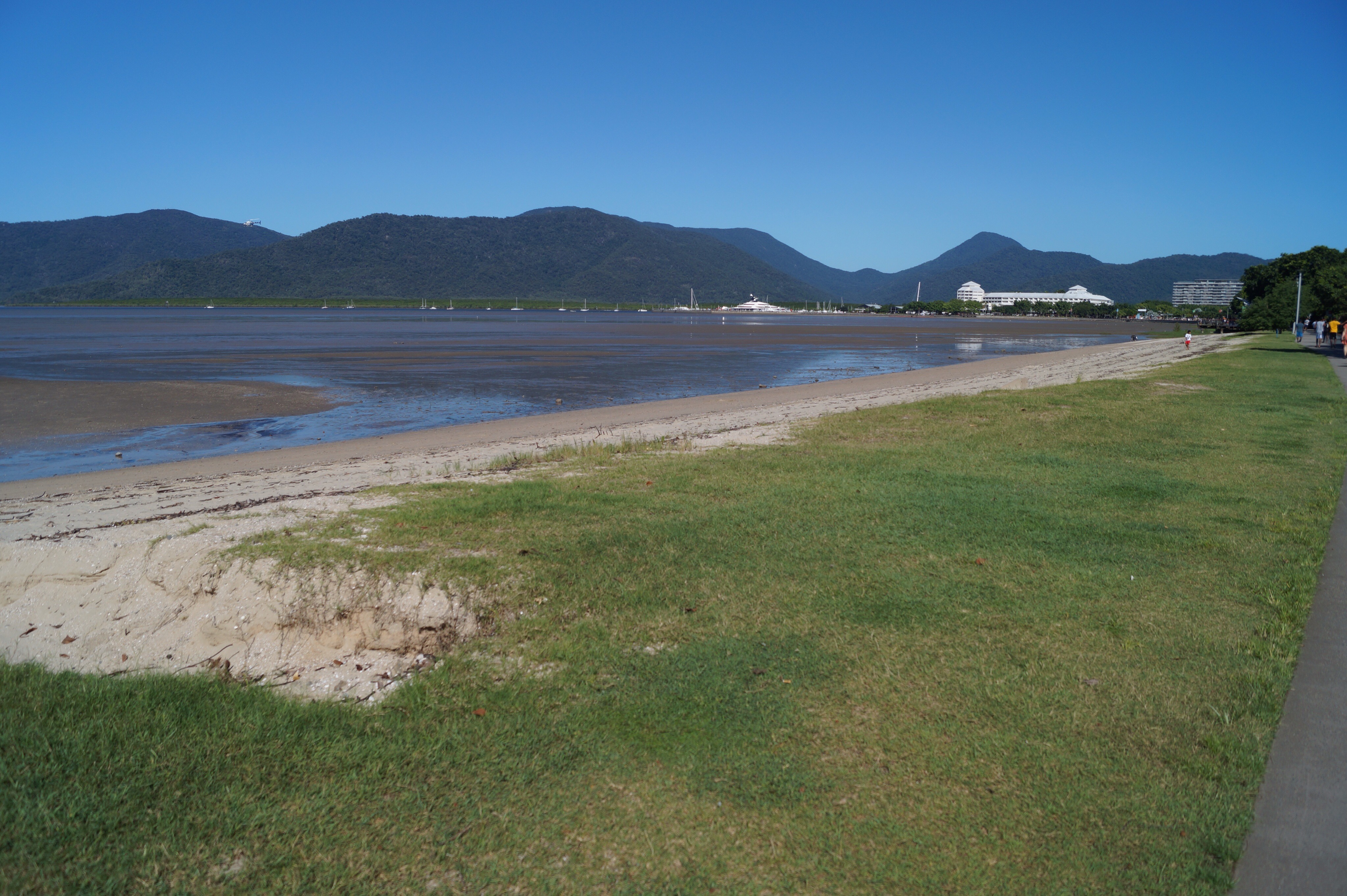 It was also Easter while we were here in Cairns which was good news for the kids. The caravan park where we were staying put on an Easter party so the girls loved playing games, winning chocolate prizes and going on an Easter egg hunt.
It was also Easter while we were here in Cairns which was good news for the kids. The caravan park where we were staying put on an Easter party so the girls loved playing games, winning chocolate prizes and going on an Easter egg hunt.
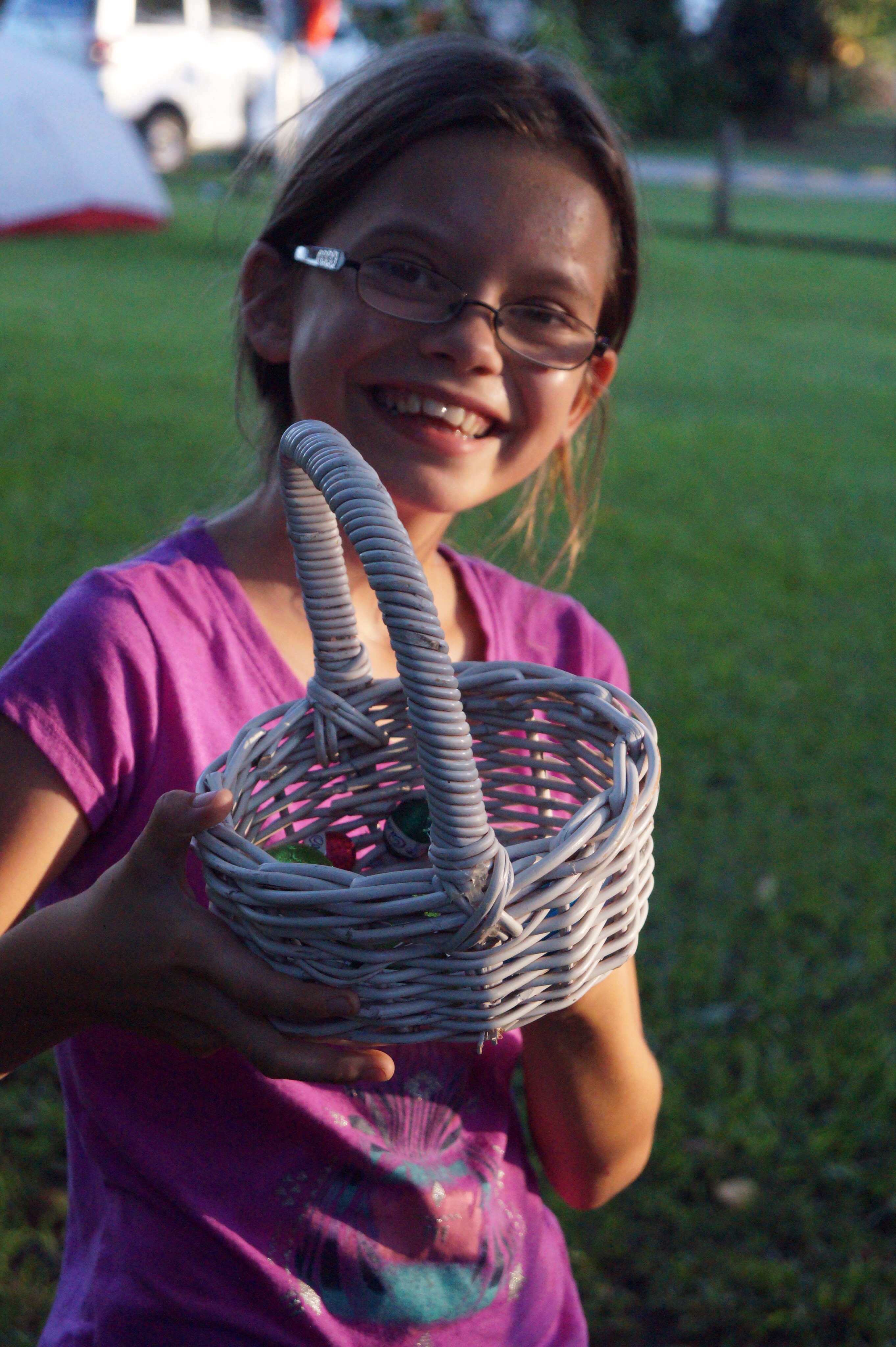
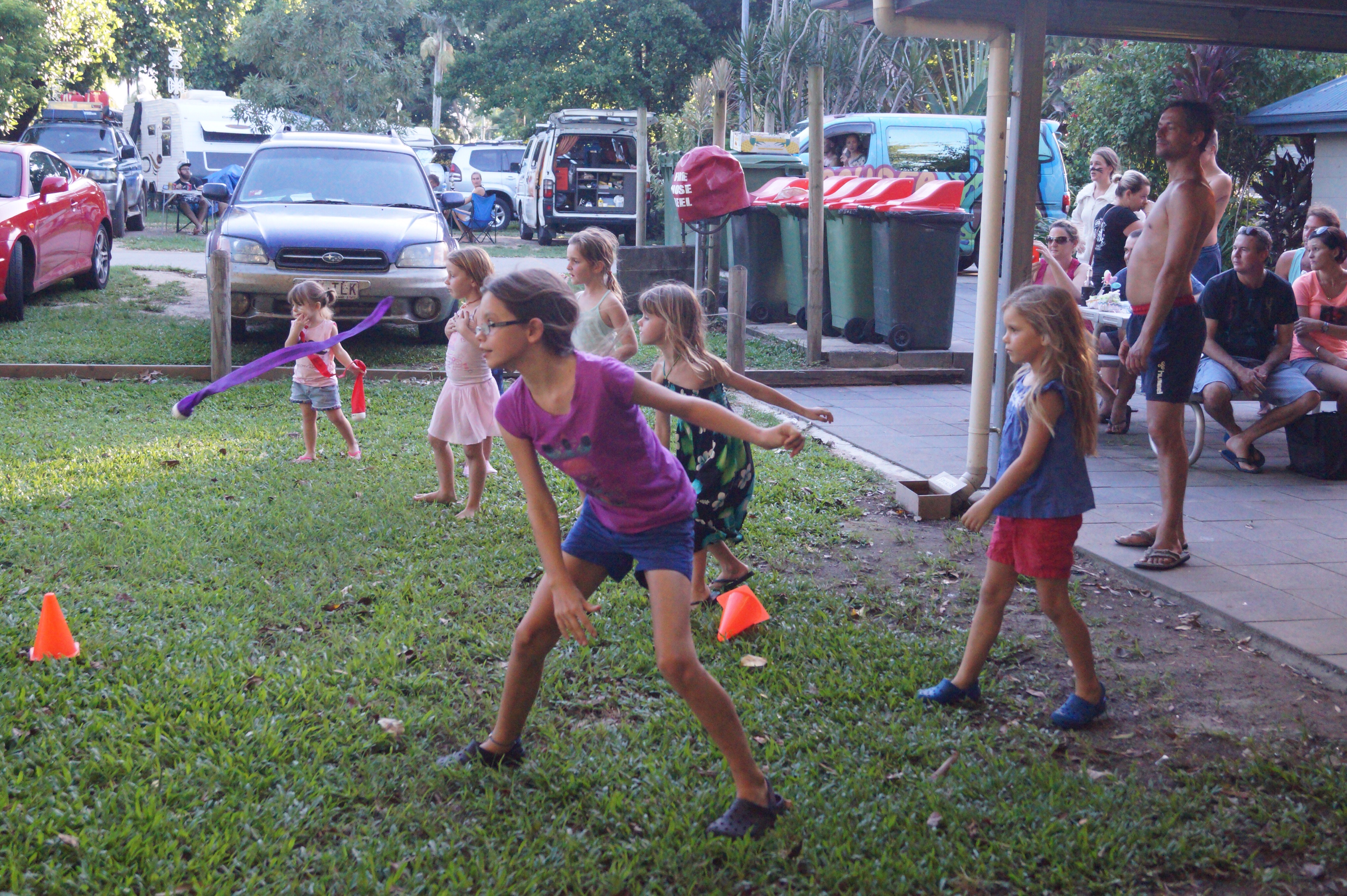 Now the only problem is the fridge is full of chocolate and we need to go and buy some food and beer. Priorities, as nothing survives for long outside the fridge in this heat!
Now the only problem is the fridge is full of chocolate and we need to go and buy some food and beer. Priorities, as nothing survives for long outside the fridge in this heat! 
























